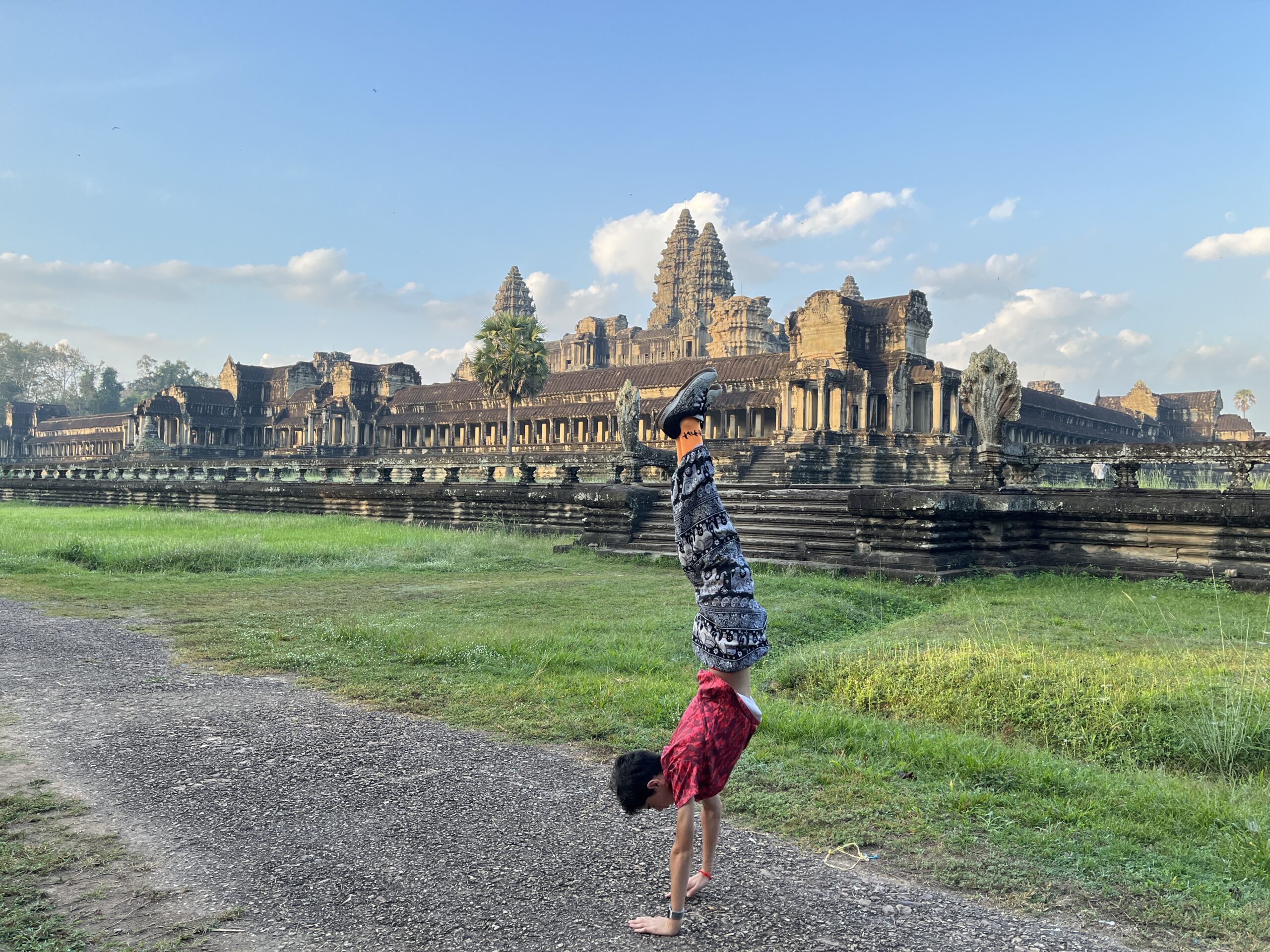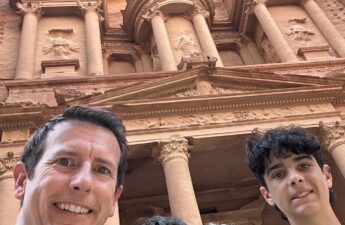Cambodia is the third country we visited on our South East Asia tour. We took a short flight from Bangkok to Phnom Penh. The immigration on-arrival process was fast and easy. Navigating immigration in each country is interesting. The hardest country we entered was Bolivia. Cambodia is either an e-visa or visa on arrival. We did visa on arrival and it worked out well. We stood in line for about 10 minutes, paid money, and got a passport stamp.
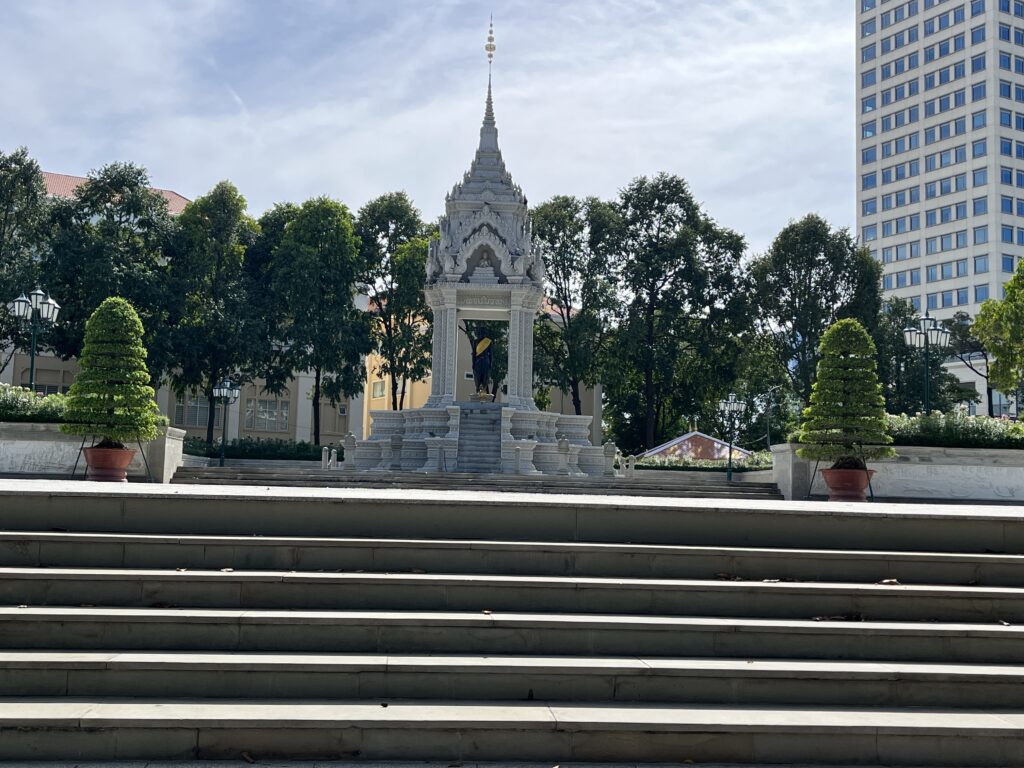
We spent four nights in Phnom Penh. We booked an Airbnb near the Royal Palace. The Airbnb had a courtyard with a dog named Oden, a turtle, a fish, and some iguanas. We arrived in the evening and were exhausted from our travel day. It started early with a three-hour drive from Hua Hin to Bangkok.
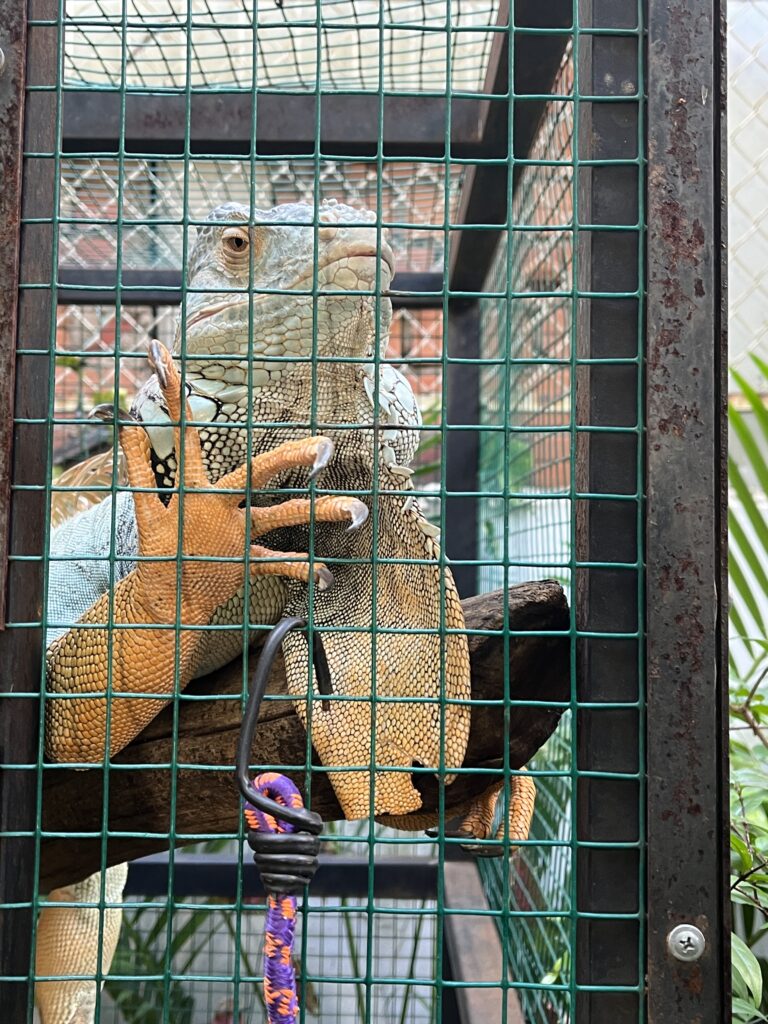
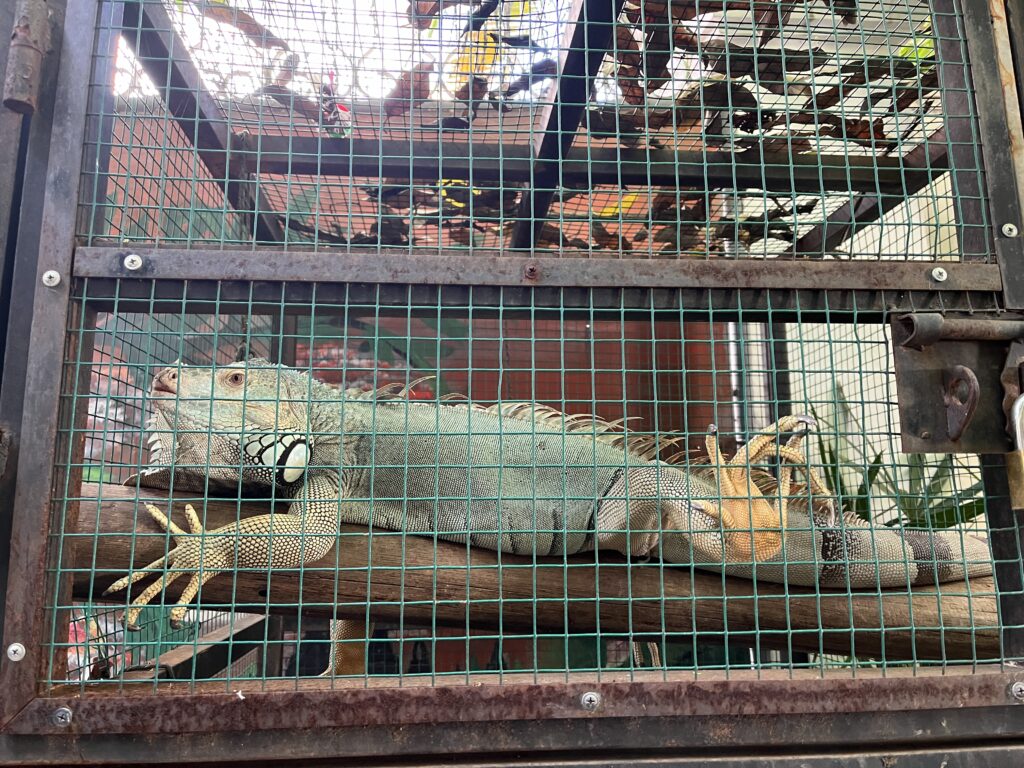
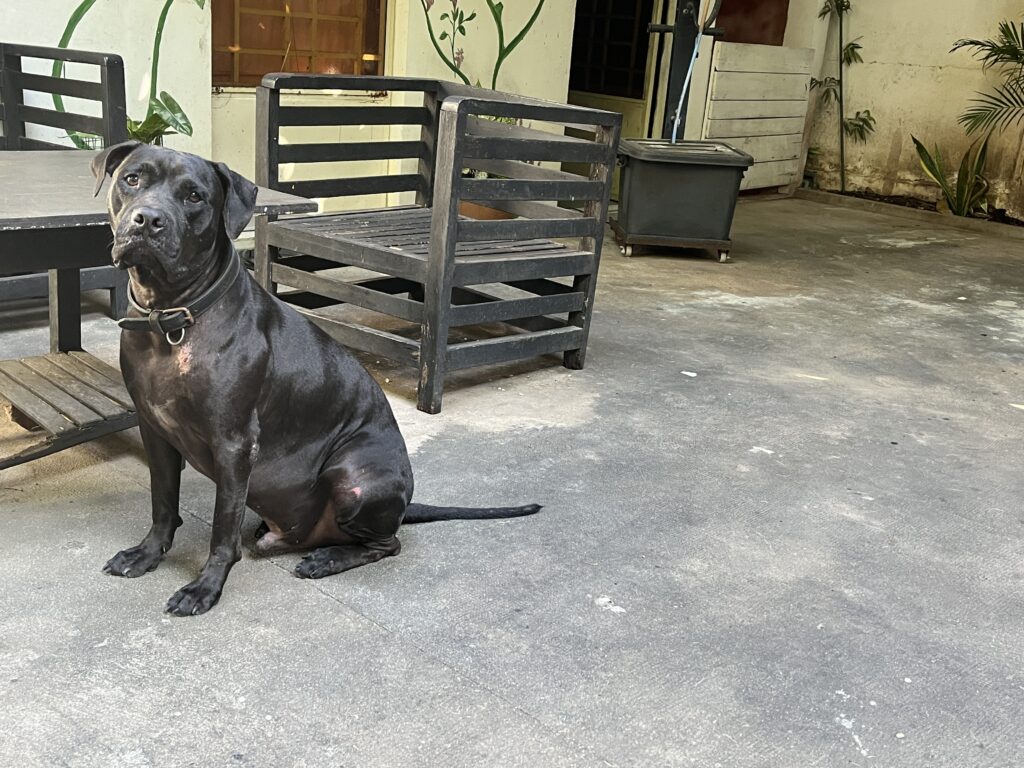
We walked around the area of our Airbnb and had drinks at the fancy rooftop restaurant at the Hyatt Hotel. Then we ate dinner at a Mexican restaurant with what Michael, Lucas, and Henry say has excellent cheese dip. We were all in a bad mood that day. It happens. We were all tired. Saying goodbye to our friends was sad. Traveling to a new country can be nerve-racking. It was a combination of things. We acknowledged the feelings and then got a good night’s sleep to start fresh the next day.
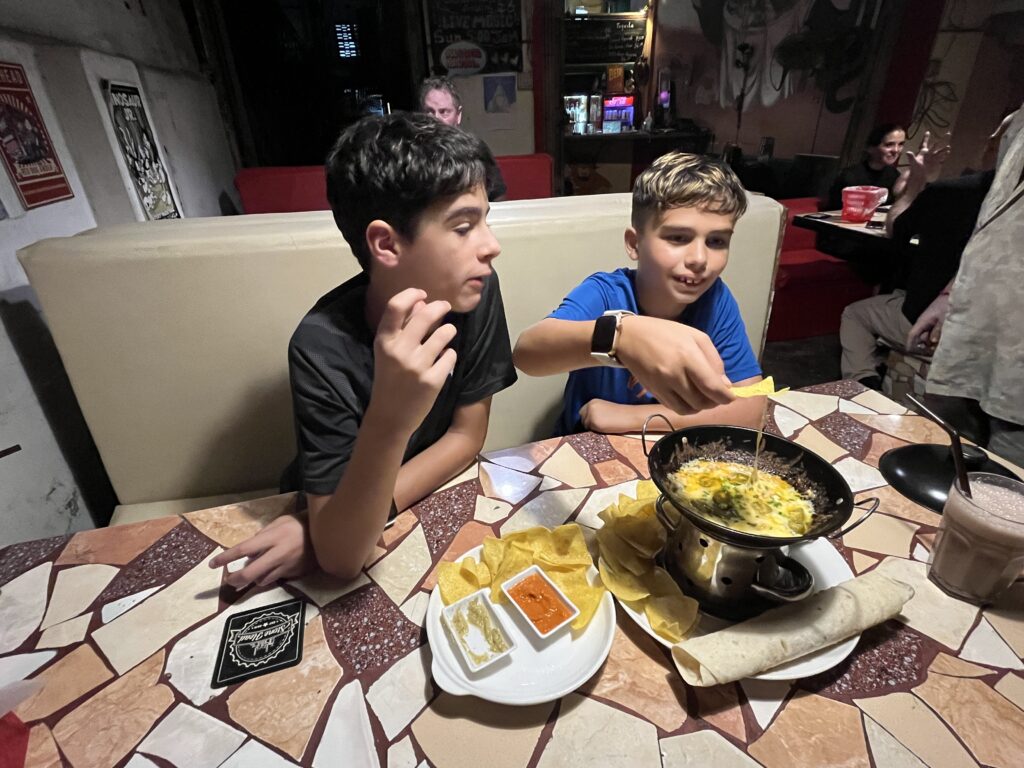


We all woke up on the right side of the bed the next day and started our sightseeing with a trip to the Royal Palace. The Phnom Penh Royal Palace is nestled in the heart of Cambodia’s capital. It was built in the 19th century and serves as the official residence of the King of Cambodia and a symbol of the nation’s sovereignty. The architecture is a mixture of Khmer and French architectural styles. The Silver Pagoda, located within the palace grounds, houses a priceless collection of Buddha statues adorned with precious gems. A lot of the palace was under construction when we visited, but it was still stunning. Lucas and Henry do not always appreciate the temples and palaces we visit, but they are good sports about it.
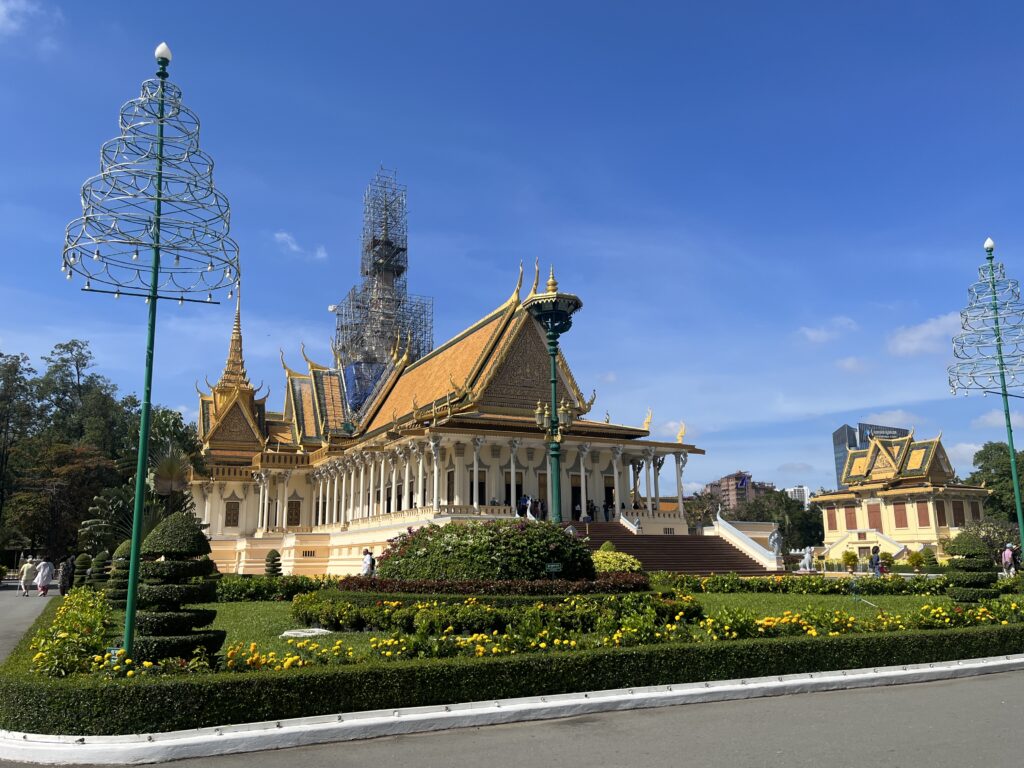
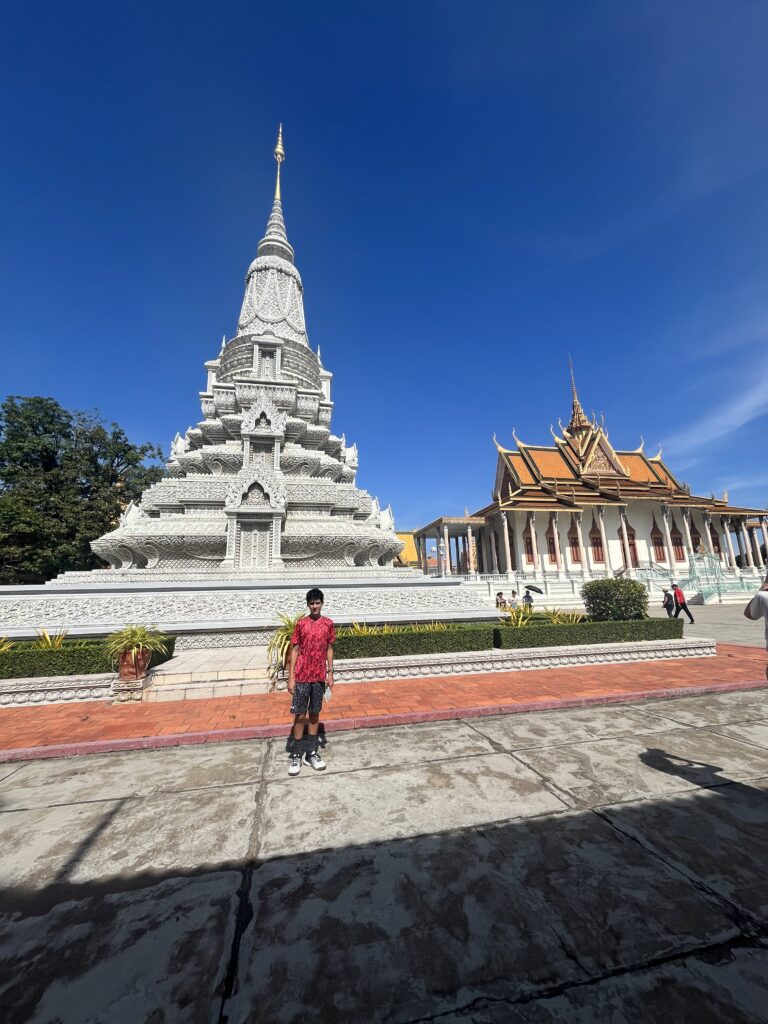
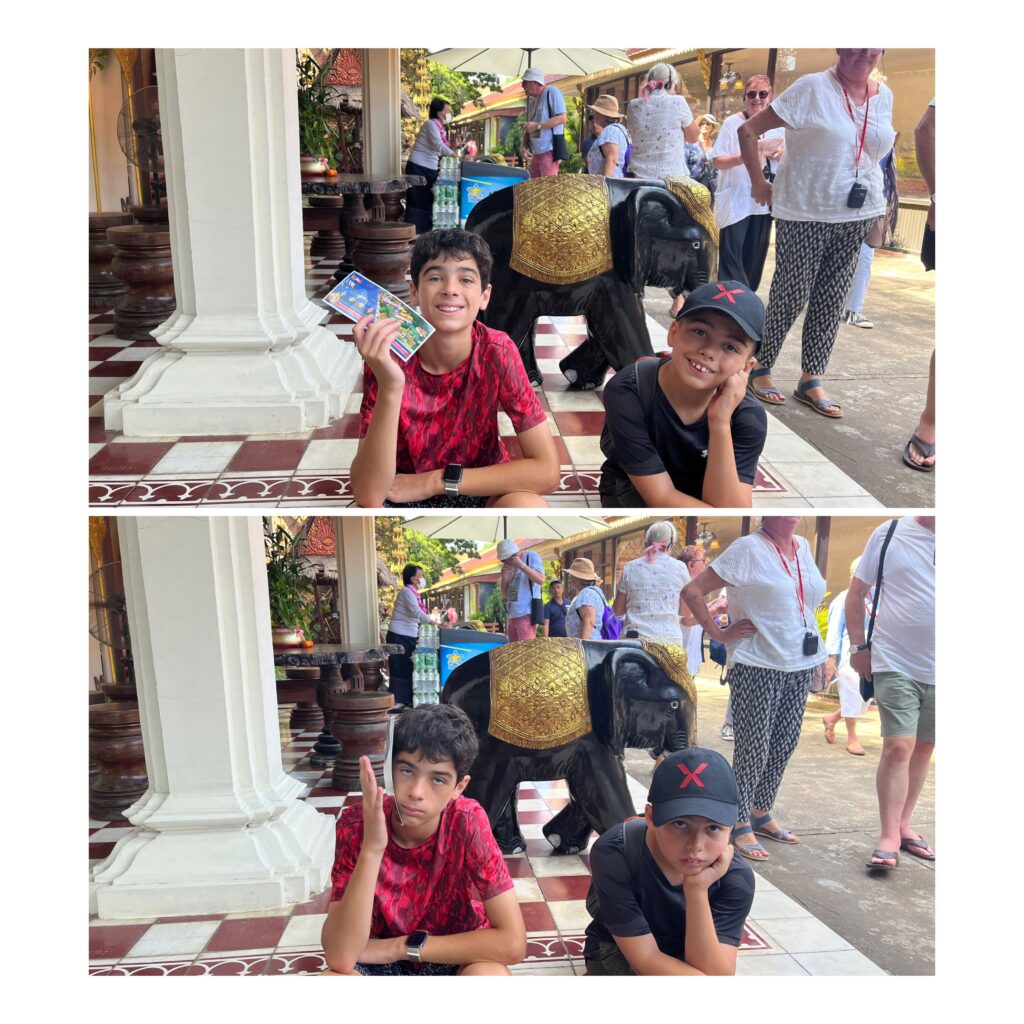
Next, we walked through Wat Botum Park. We found swings at a playground for a little break. It was hot that day, but we continued to the Statue of His Majesty Preah Bat Samdech Preah Norodom Sihanouk. It was there that we met a tuk-tuk driver who convinced us to take a tour of the city with him. There are a lot of tuk-tuk drivers vying for business.
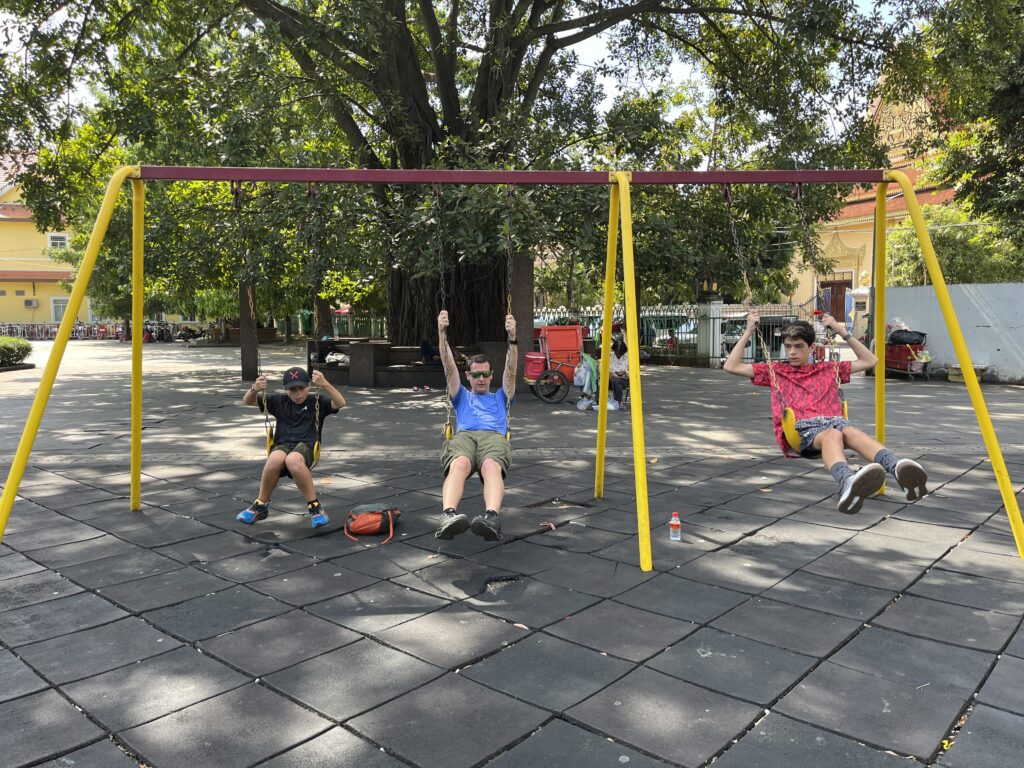
The tour hit a lot of the sights we pinned on our map. It started with a stop at Wat Phnom Daun Penh Buddhist temple. We spent some time walking around the area. Then we rode along the river and passed the National Museum of History, and the Royal Palace again. We walked around the Russian Market. Henry tried to find shoes but had no luck.
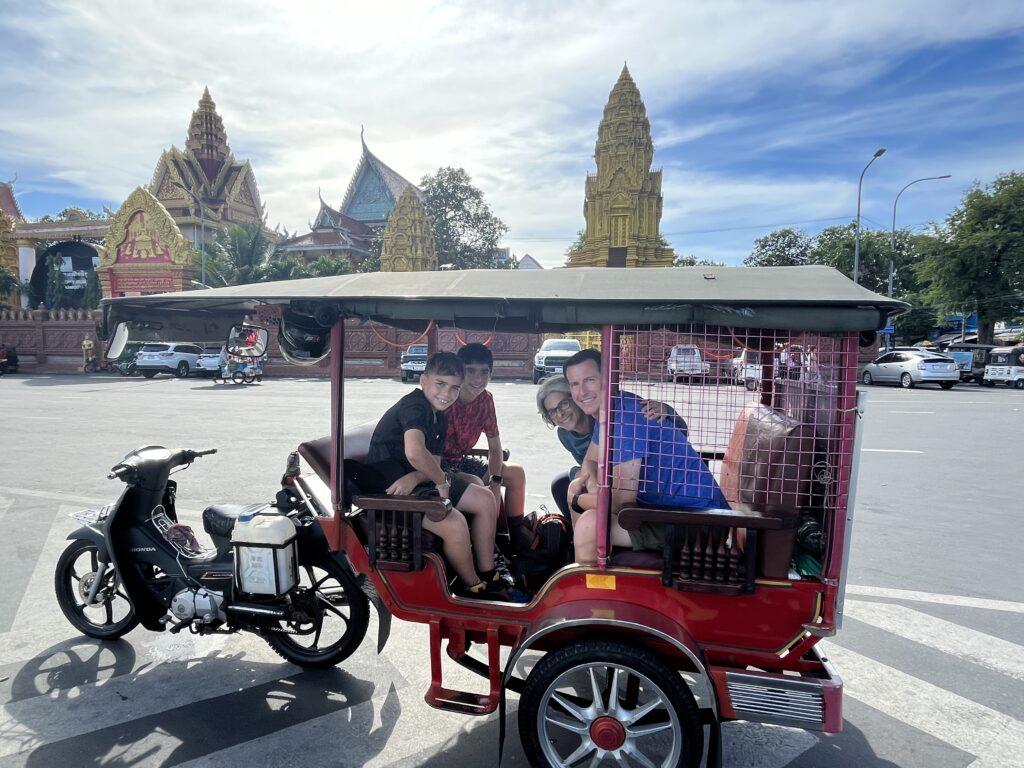
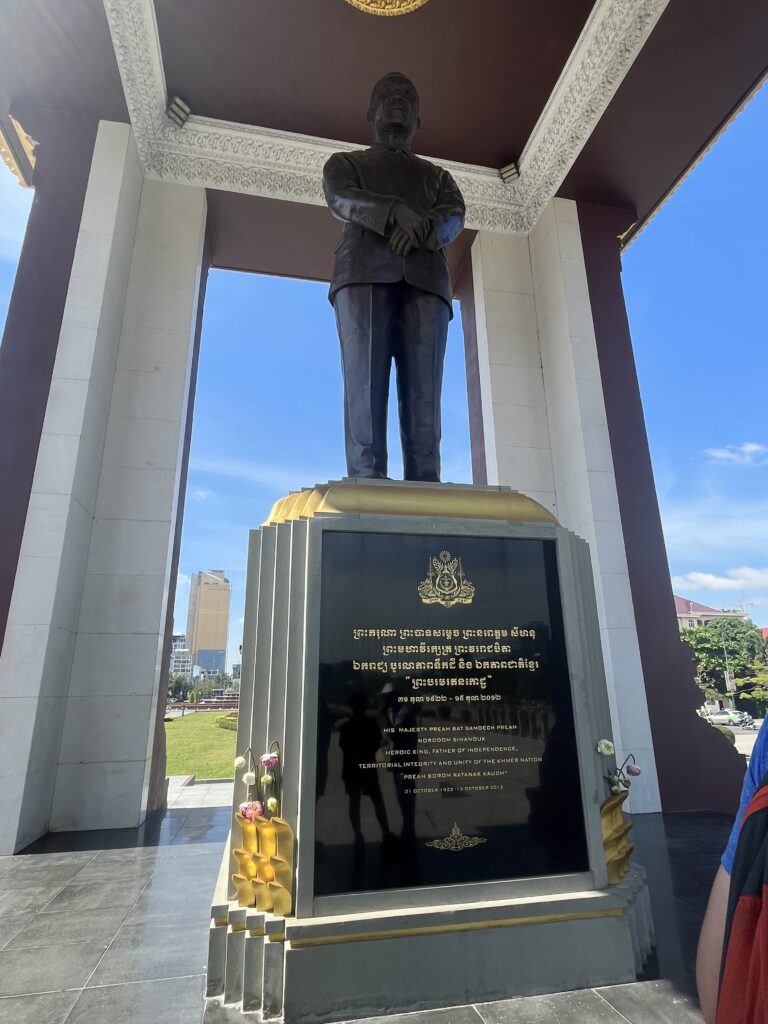

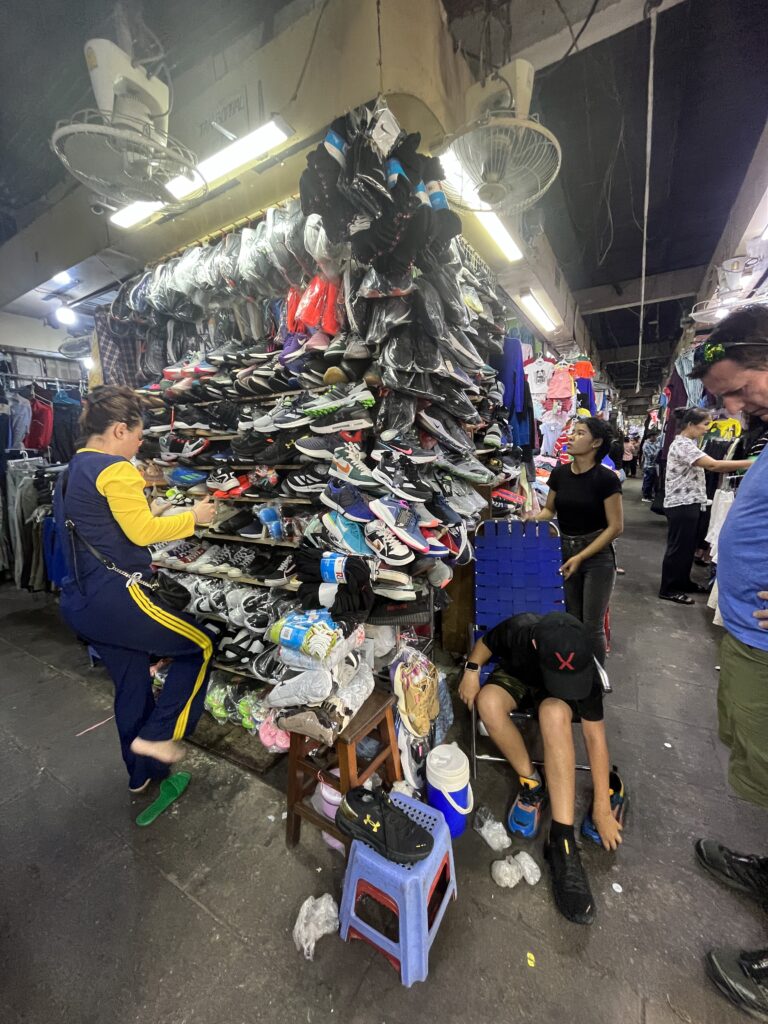
We had a delicious lunch at Planta. It is a healthy restaurant with vegan options. Lucas and Henry were pleasantly surprised they could order from the pizza restaurant. They also had a bagel shop menu. It was like a food hall. We were tired from a long day of sightseeing, so we ordered Grab for dinner, napped, and played games the rest of the night.

Day two was tough. We did a morning tour of the Tuol Sleng Genocide Museum and the Choeung Ek Genocidal Center. These places are poignant reminders of Cambodia’s tragic past, particularly during the Khmer Rouge regime from 1975 to 1979. Tuol Sleng, formerly a high school, was transformed into Security Prison 21 (S-21), a notorious torture and execution center. The museum now preserves the haunting testimonies of the countless lives lost within its walls, displaying photographs, prison cells, and the chilling instruments of torture.
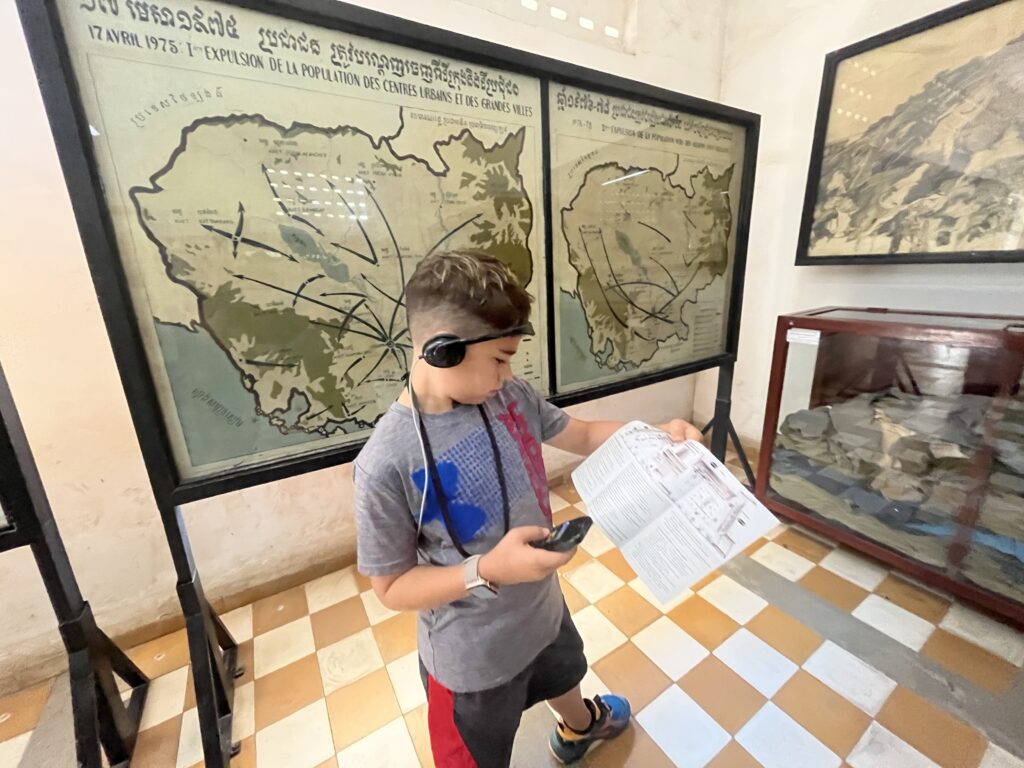
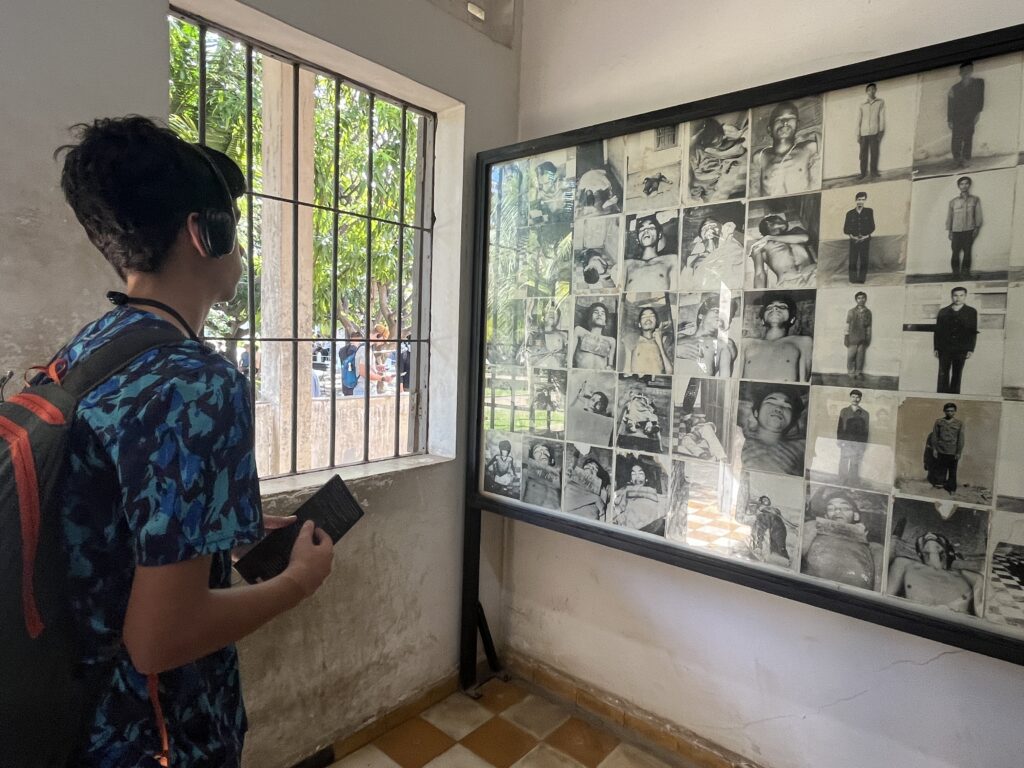

The genocide committed by Pol Pot and his army in the late 1970s in Cambodia is not something Michael or I learned about in school. He was a ruthless leader. An estimated 3,000,000 people were murdered or displaced during this time. The goal behind this horrendous atrocity was to remove intellectuals, monks, people who looked different (including those who wore glasses), and anyone else who posed a threat to
Pol Pot planned to return to the time before modernization, during the great Khmer Empire in the 12th century.
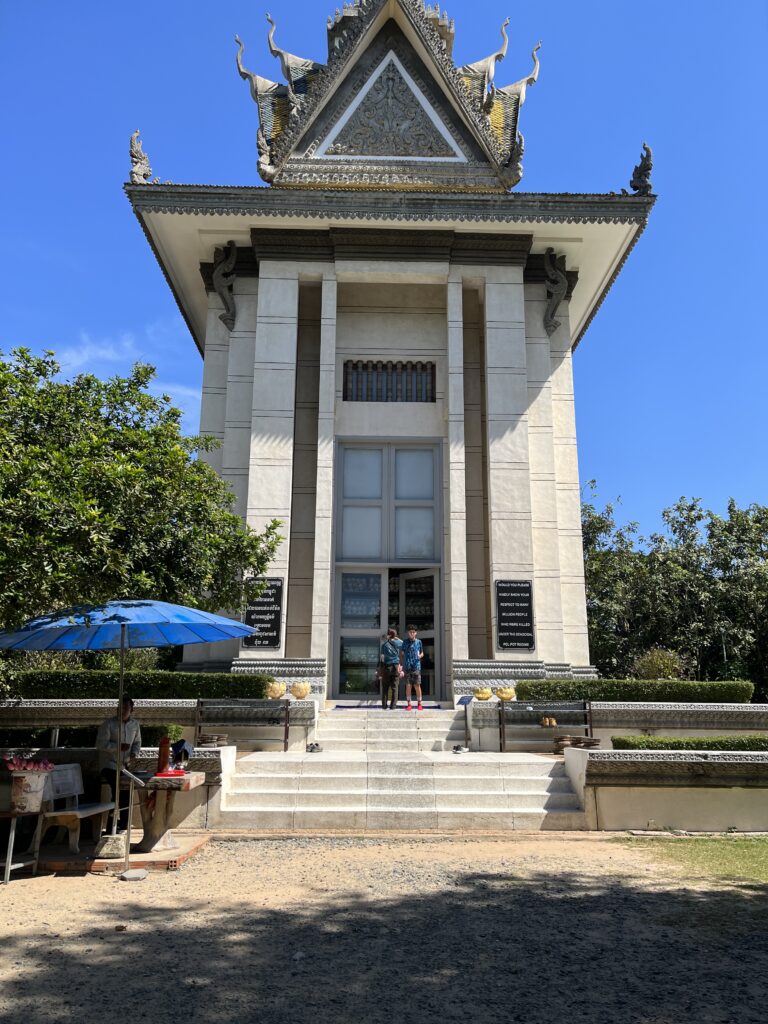
Choeung Ek, also known as the Killing Fields, serves as a mass grave site where victims from Tuol Sleng were brutally executed. A visit to these sites is a sobering experience, offering insight into the atrocities committed during this dark chapter of Cambodian history. For our family, was a powerful educational journey, fostering empathy and understanding of the resilience of the Cambodian people.
The museums commemorate the lives lost and also serve as a vital tool for educating future generations about the importance of human rights and the consequences of unchecked power. It is a somber yet essential pilgrimage for our family as we try to instill the values of compassion and justice in Lucas and Henry. It was not easy for Lucas and Henry to learn about the history, but it is important. Cambodia is still healing and rebuilding from these traumatic events.
After Phnom Penh, we traveled to Siem Reap. It is a 5-hour van ride from Phnom Penh. We stopped to buy our bus tickets to Siem Reap while on our tuk-tuk tour. We were going to get our tickets from a large tour company, but our guide took us to a place that is not a tourist bus station. He probably got a kickback from taking us there. It was not the most glamorous ride, and it arrived about an hour late, but it got us from Phnom Penh to Siem Reap.

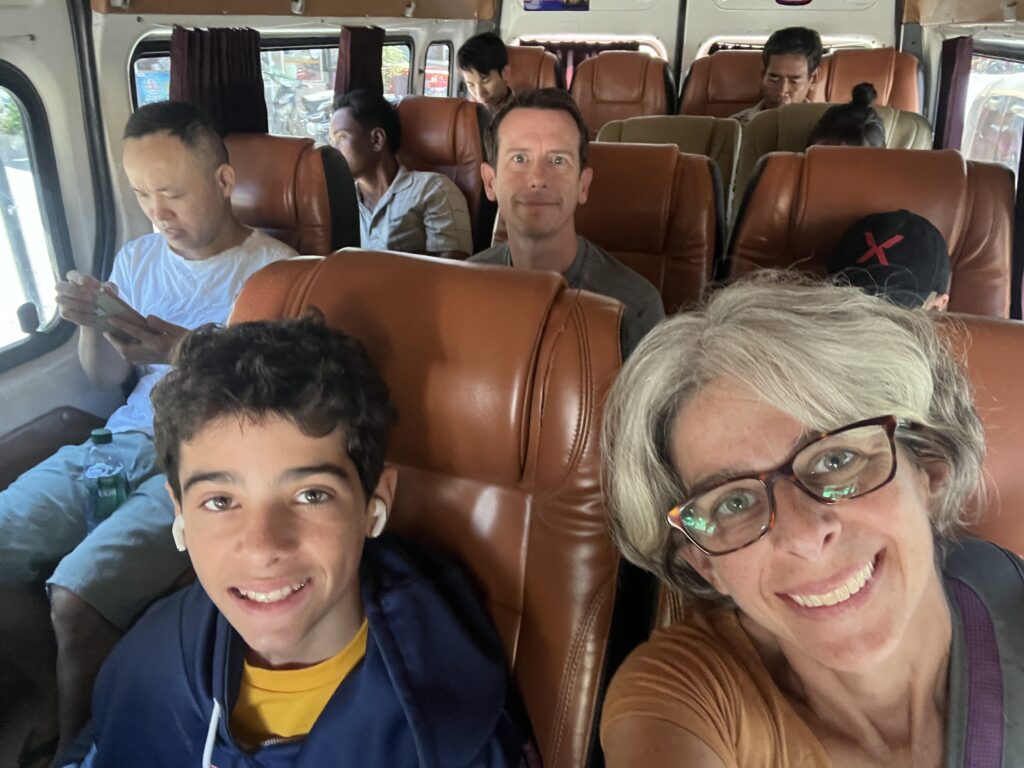
We checked into our hotel (Uncle Sam’s Villa) and then reunited with our friends- the Sigstons! We had dinner and ice cream to celebrate our first night in Siem Reap. The boys love rolled ice cream.

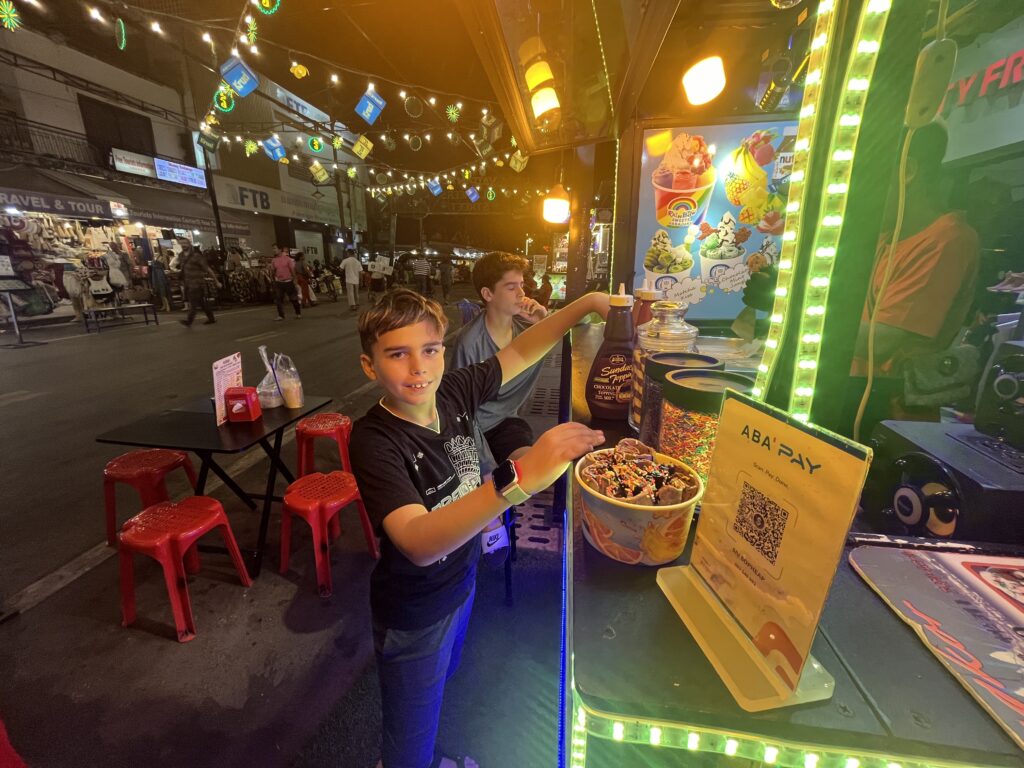

Lucas and Henry did a three-hour woodworking workshop with their friends at Puey Stone. They said it was hard but fun.
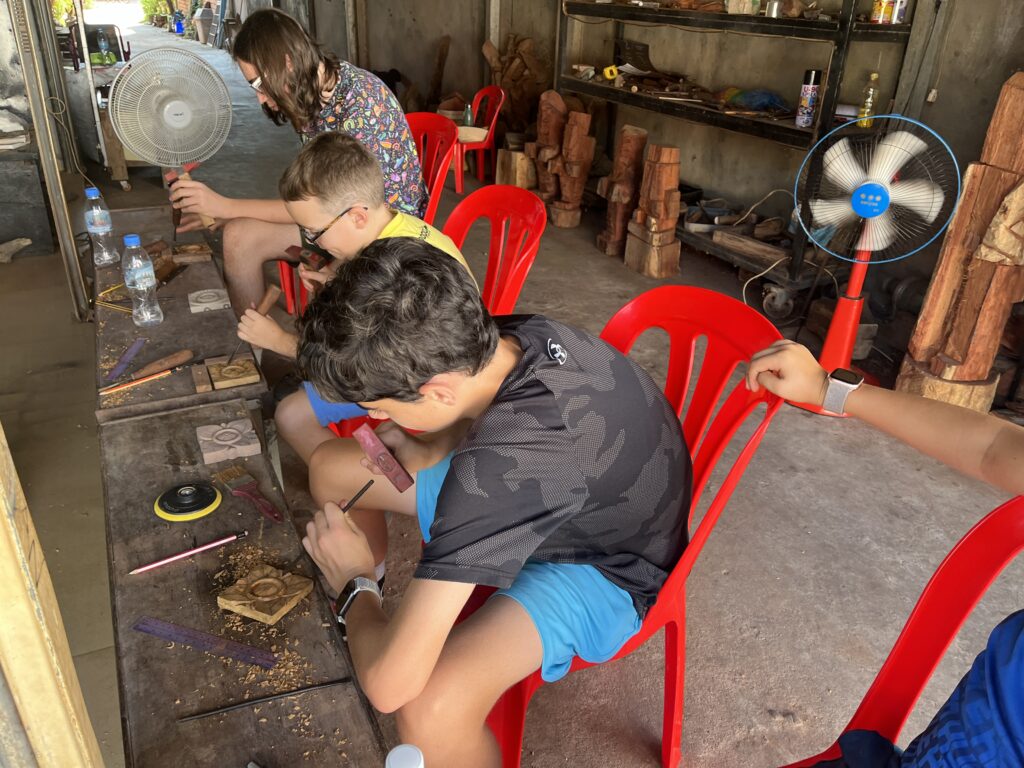
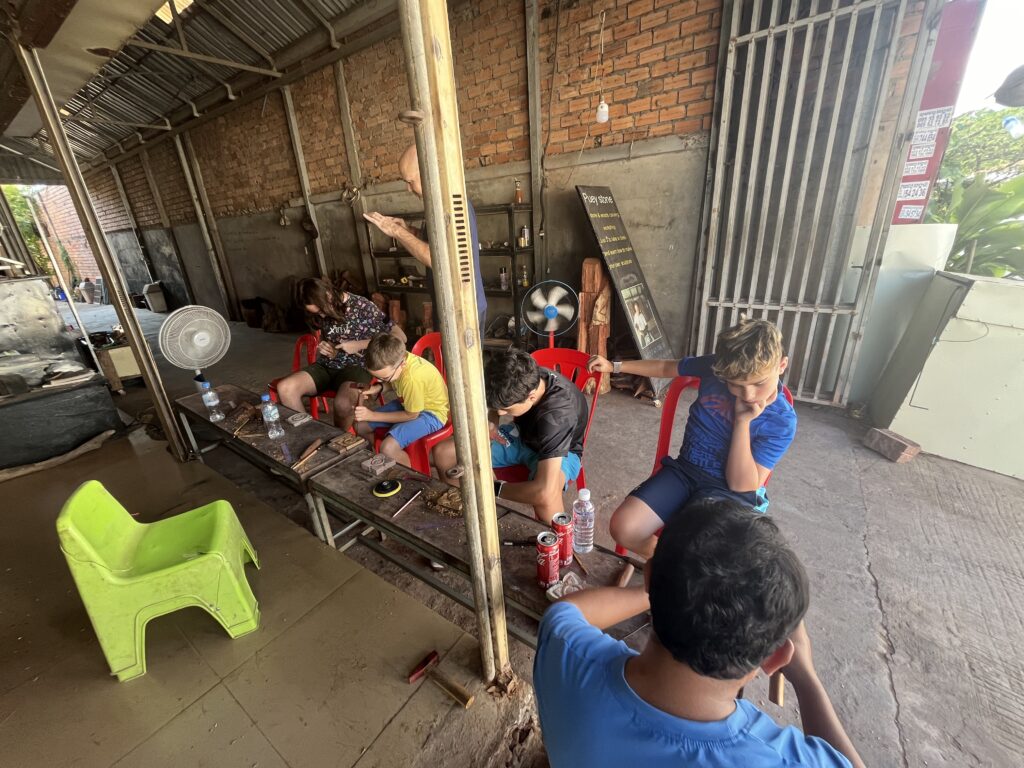
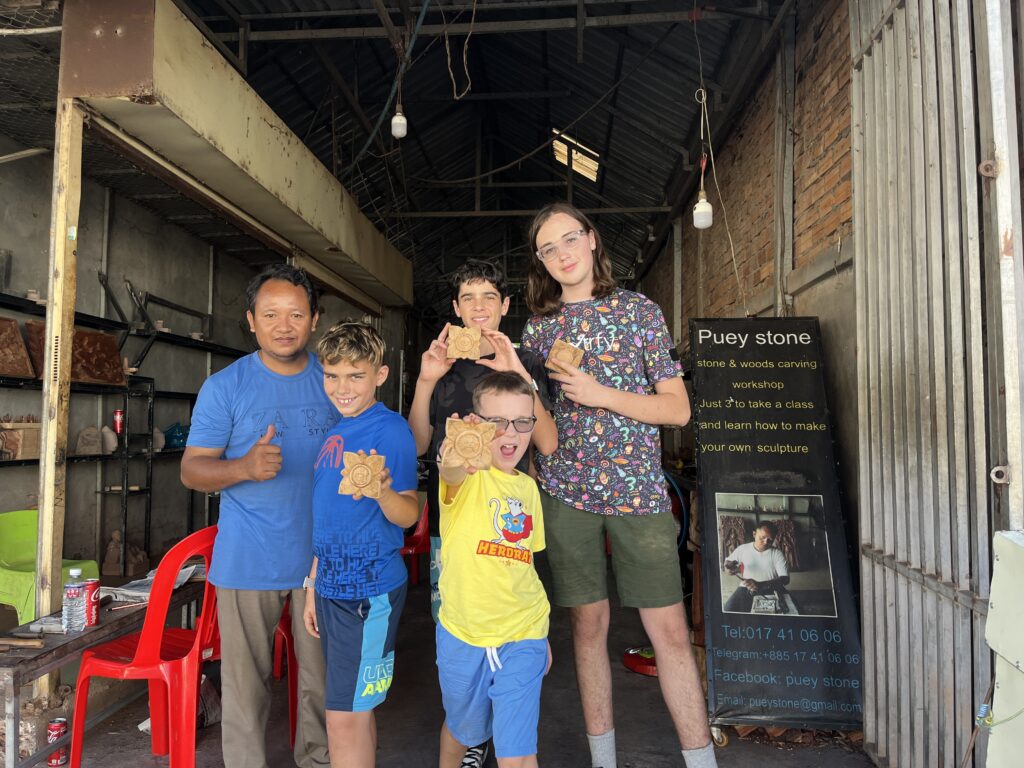
On Tuesday, we visited Apopo. It is an organization working to clear Cambodia of landmines left over the years from conflicts. Apopo uses African Pouch rats to help detect buried TNT. The rats are nicknamed HeroRats, and they are loved and respected by their handlers. The rats can detect mines much faster than humans with metal detectors. They can clear a field the size of a tennis court in 30 minutes when it would take people four days to clear the same about if land. The rats work for about five years and then spend their final years being pampered in retirement. Michael, Henry, and I held Ezron, one of their star mine-detecting rats.

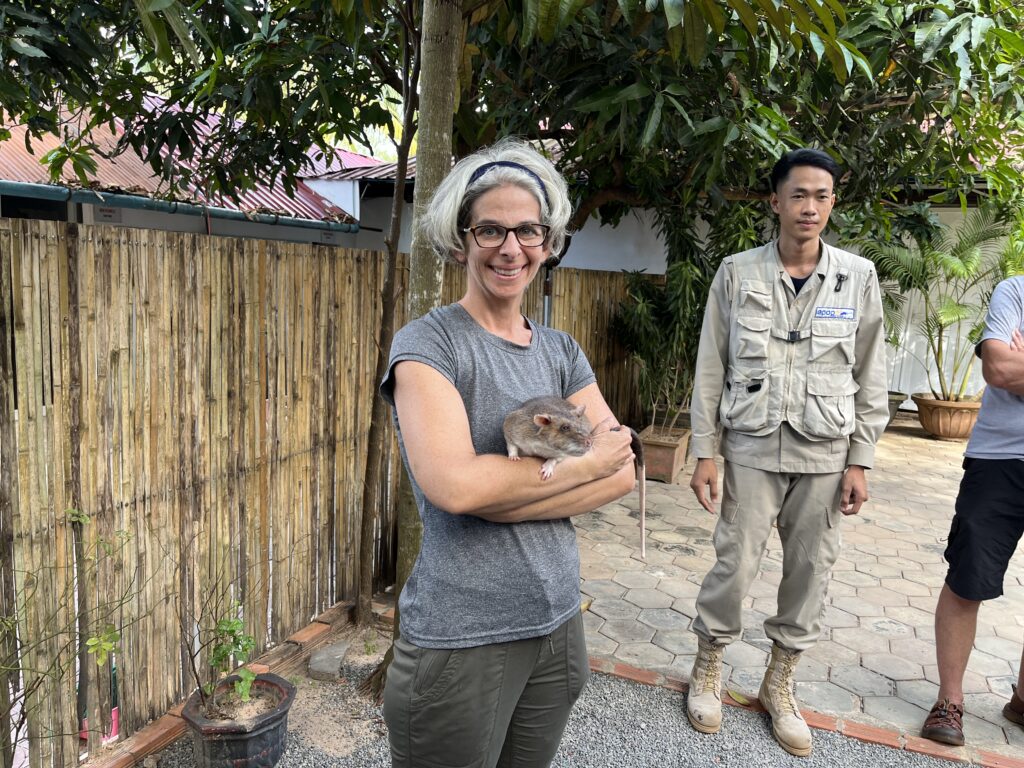
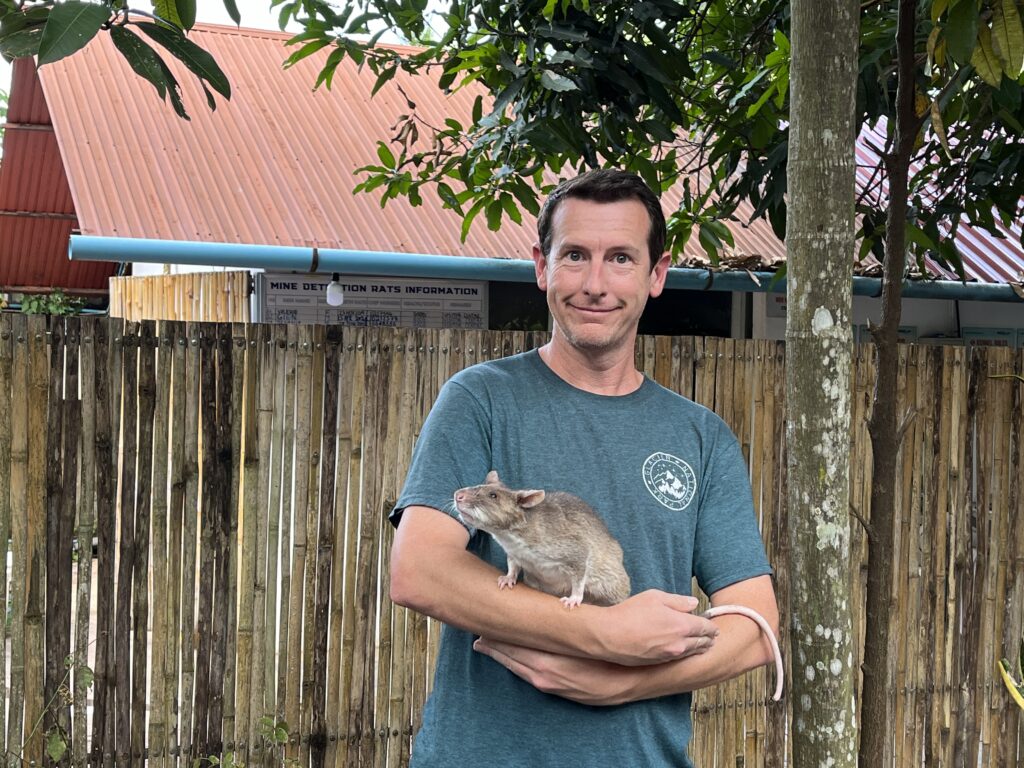

The organization has cleared 33 million square meters of land and located and destroyed over 50,000 mines and unexploded munitions. There are about five million land mines left. Much of the land in Camborida has been hazardous and unusable by locals for decades. Clearing the land allows the locals to rebuild and use the land for farming and other enterprises.

We visited Phare, the Cambodian Circus. We saw an exciting show full of music, dance, acrobatics, and circus skills. Phare was created in the aftermath of the genocide, which targeted artistic people, dancers, and musicians. It provides an education and creates an outlet for young people interested in the arts.

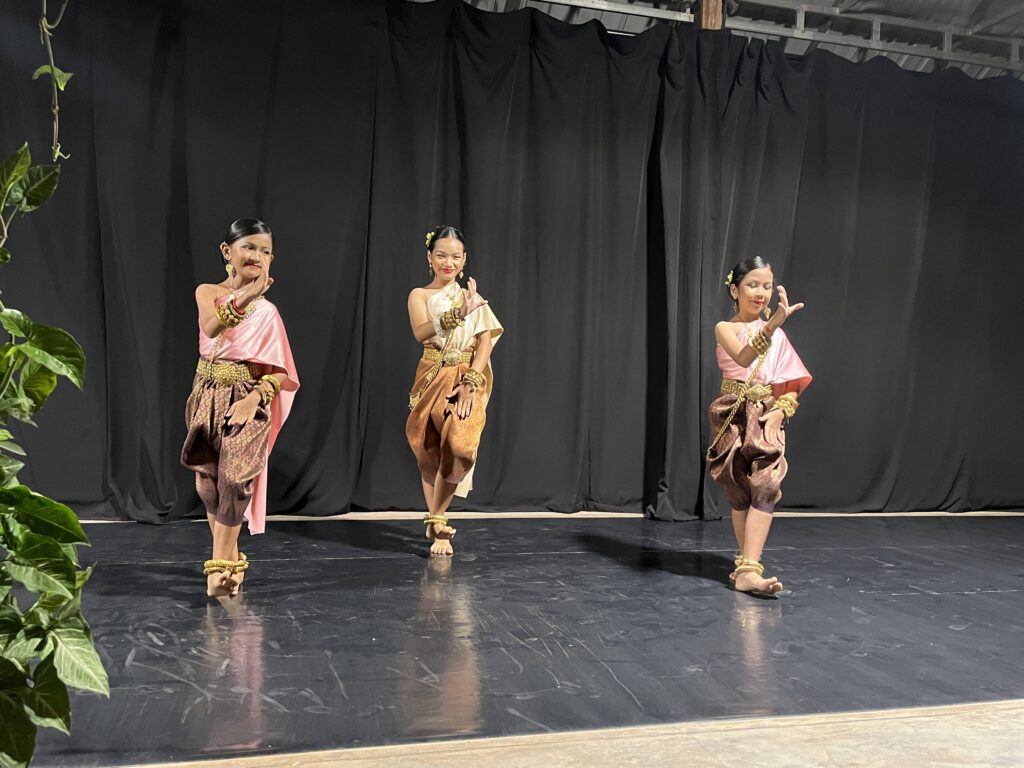
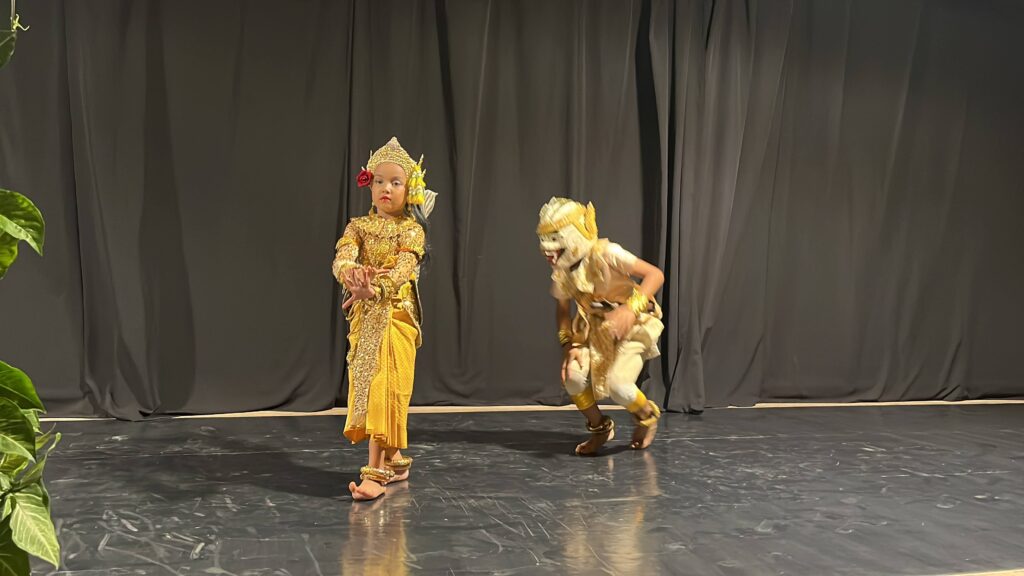
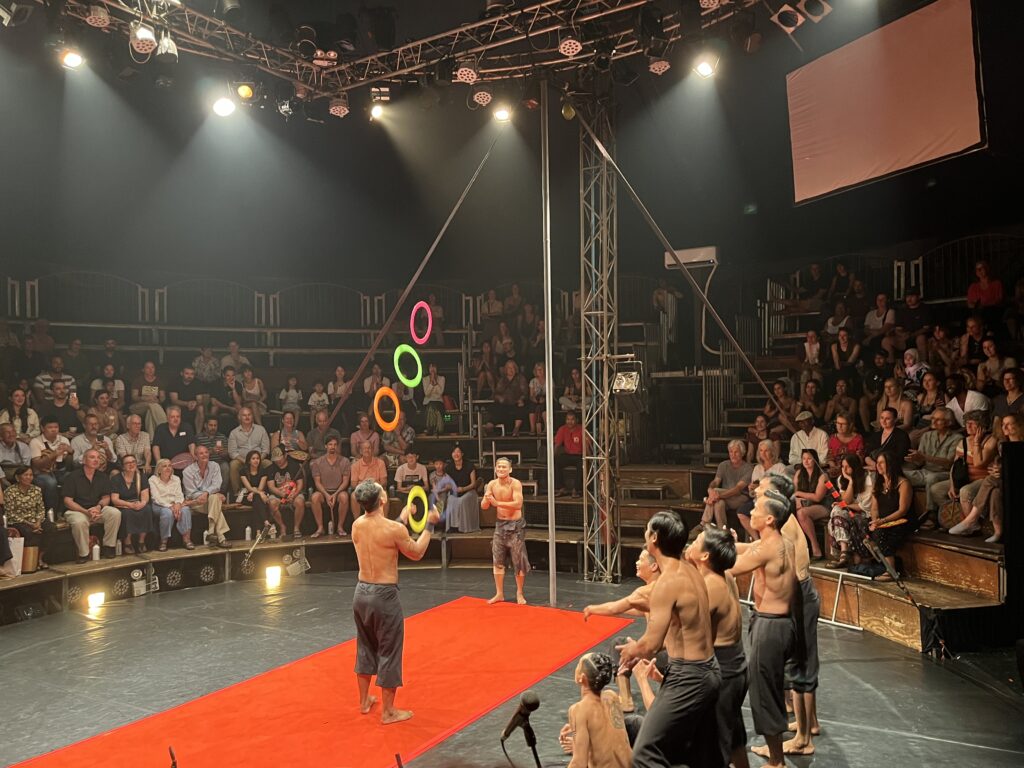
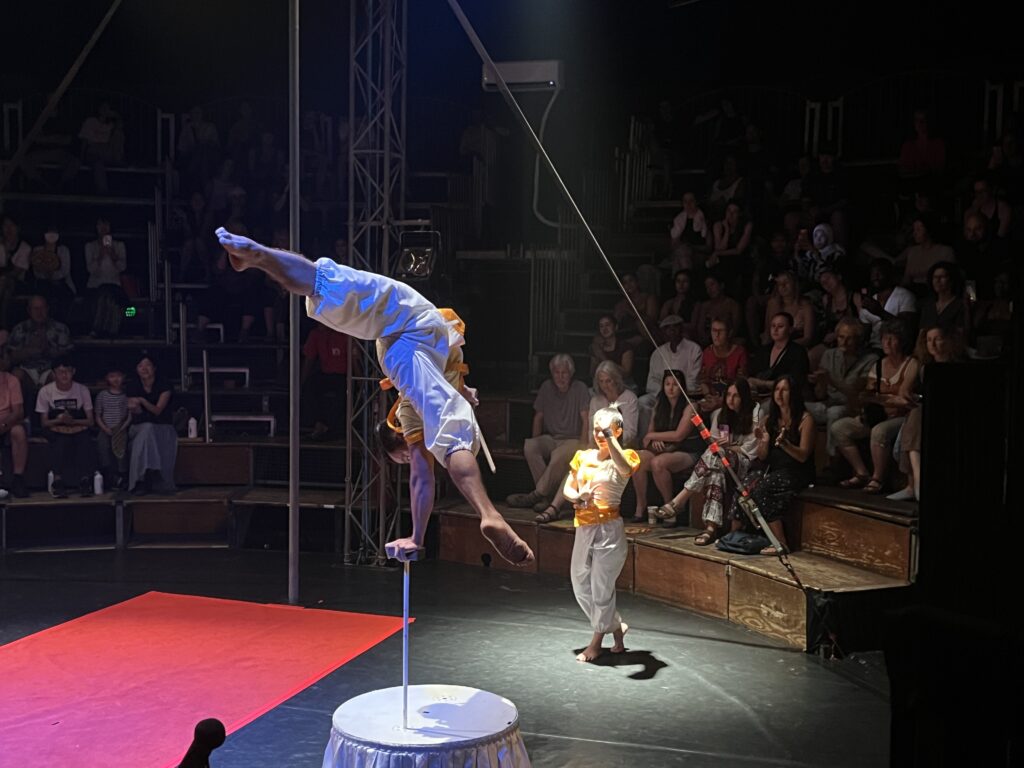
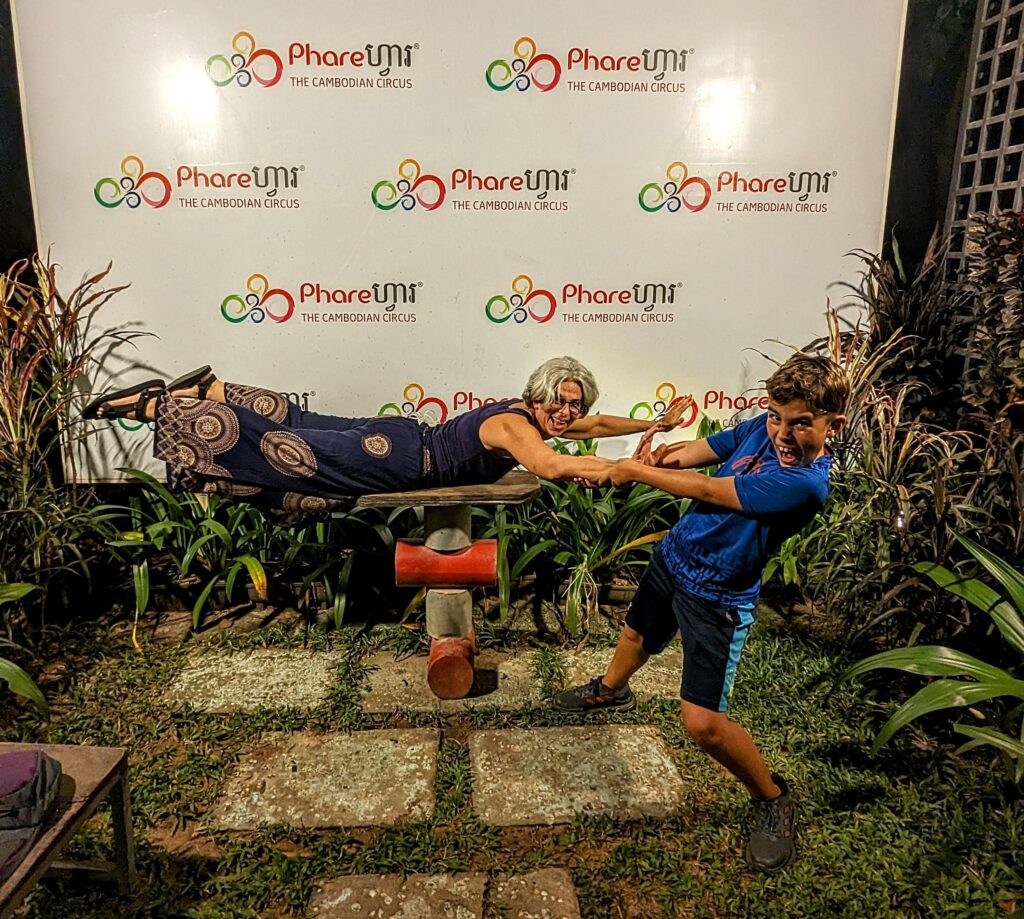
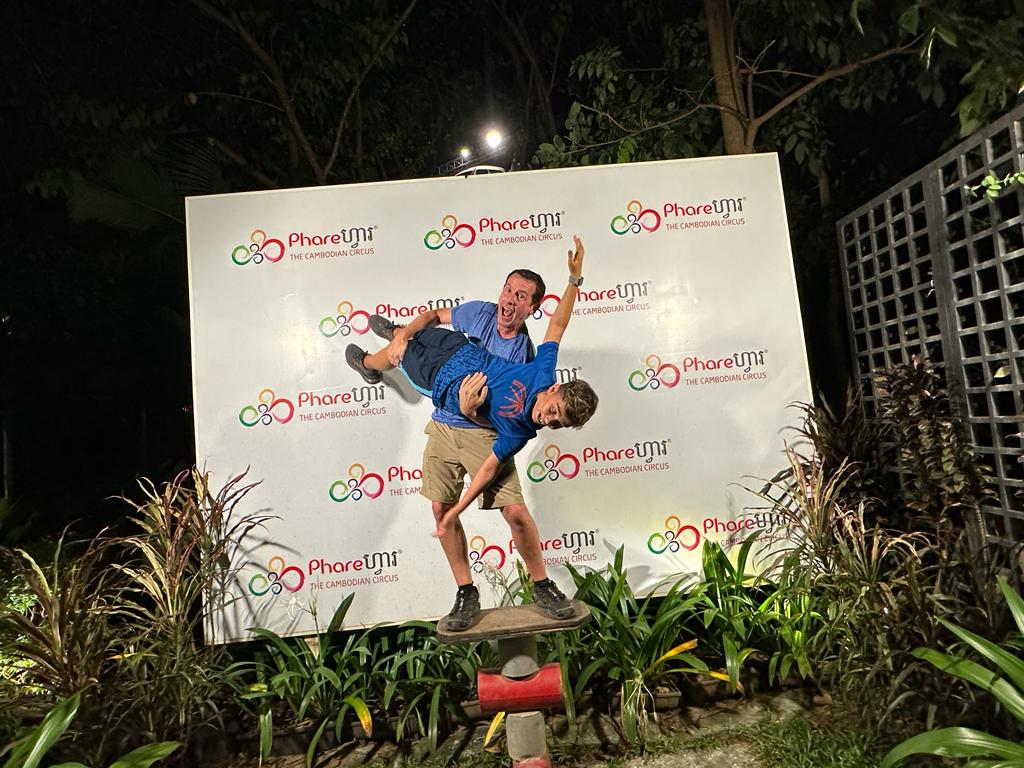
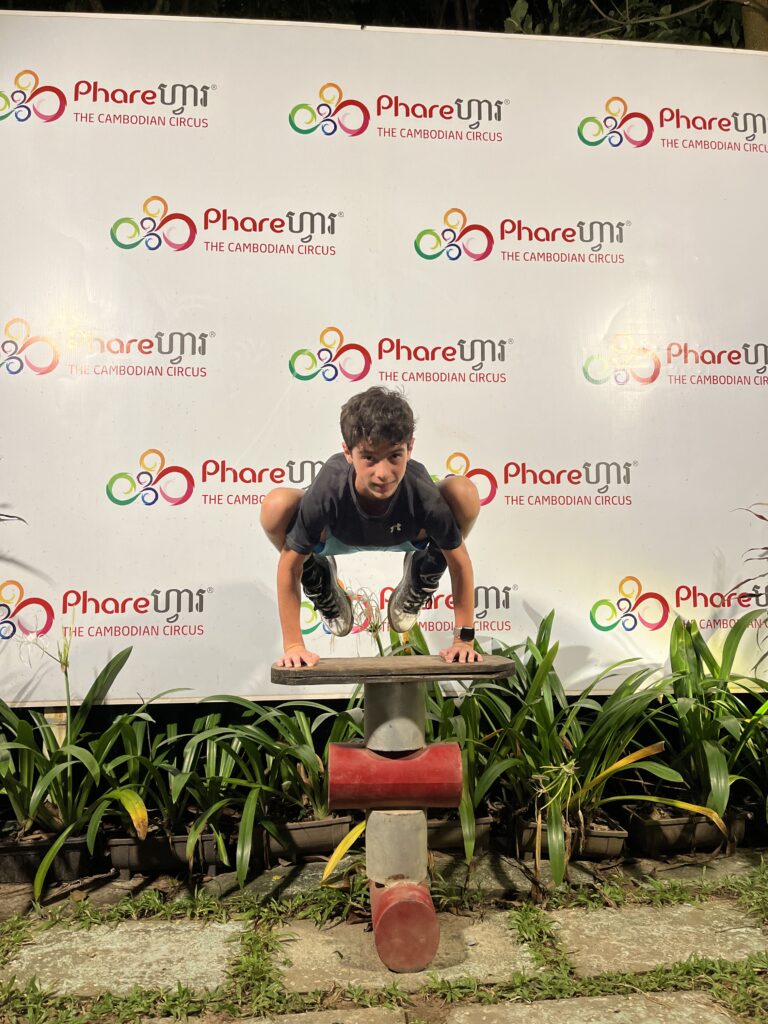
We spent two days with Sok, a guide we met through other worldschoolers. First, he took us to a Buddhist monk’s blessing. All we knew before we went was that it involved water. We started in a temple with a monk placing red bands on our wrists as a sign of good luck and protection. We then sat on the steps outside while the monk doused us with water, repeatedly. It was an unforgettable experience. None of us minded the cool water on such a hot day.
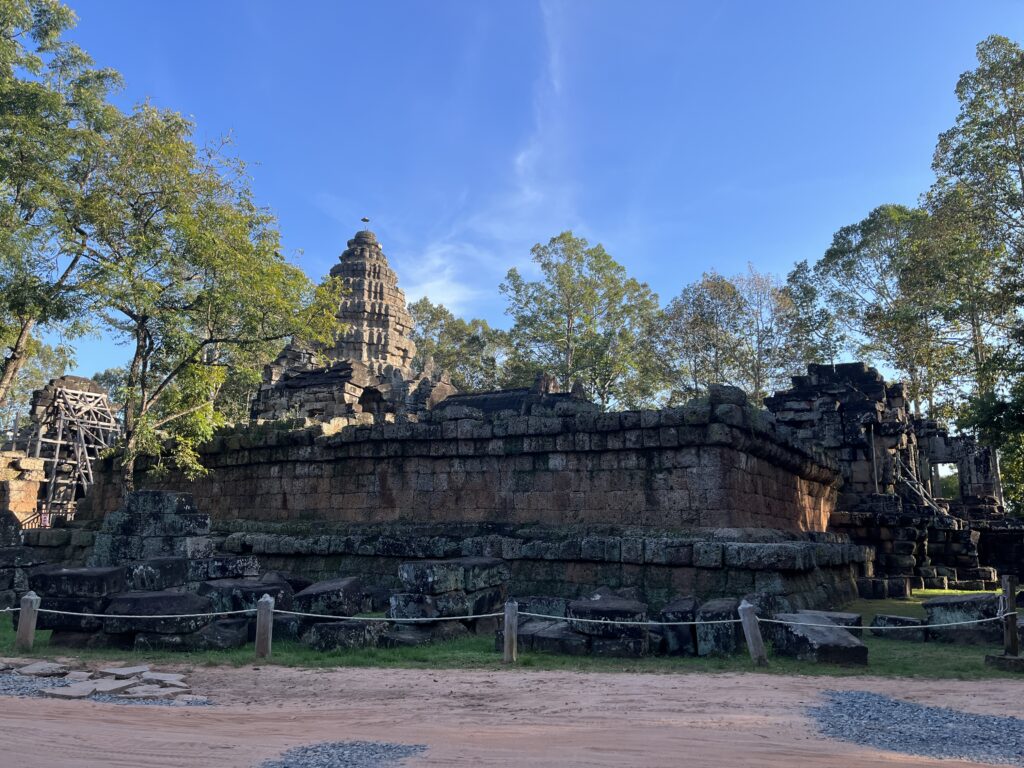
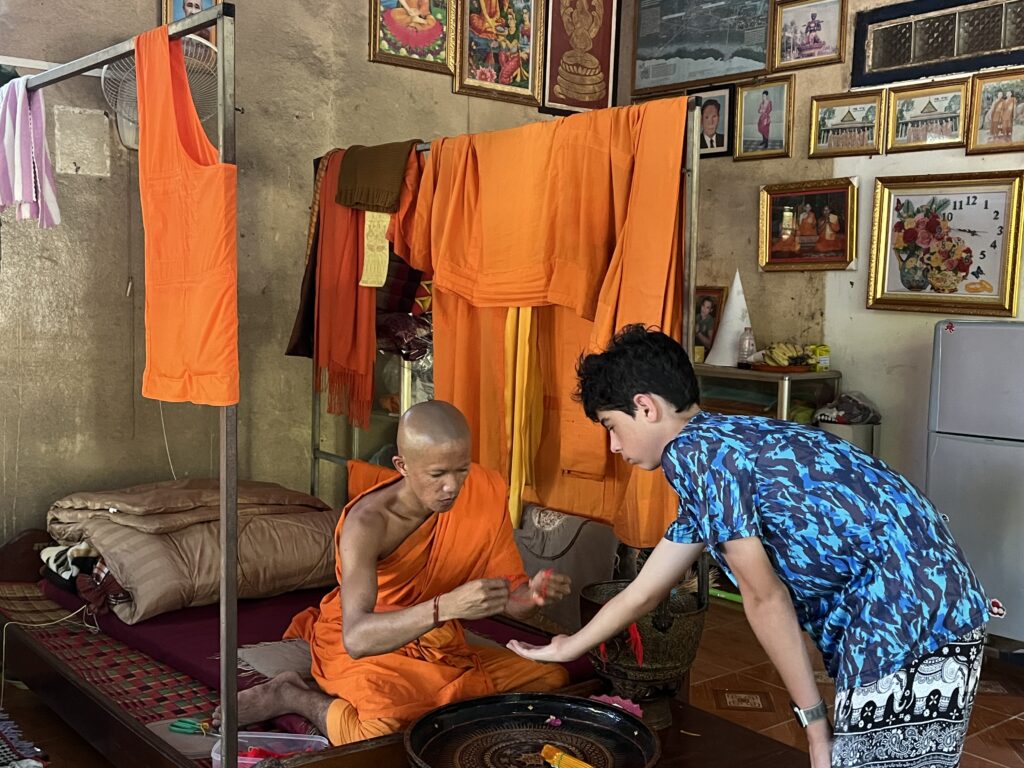
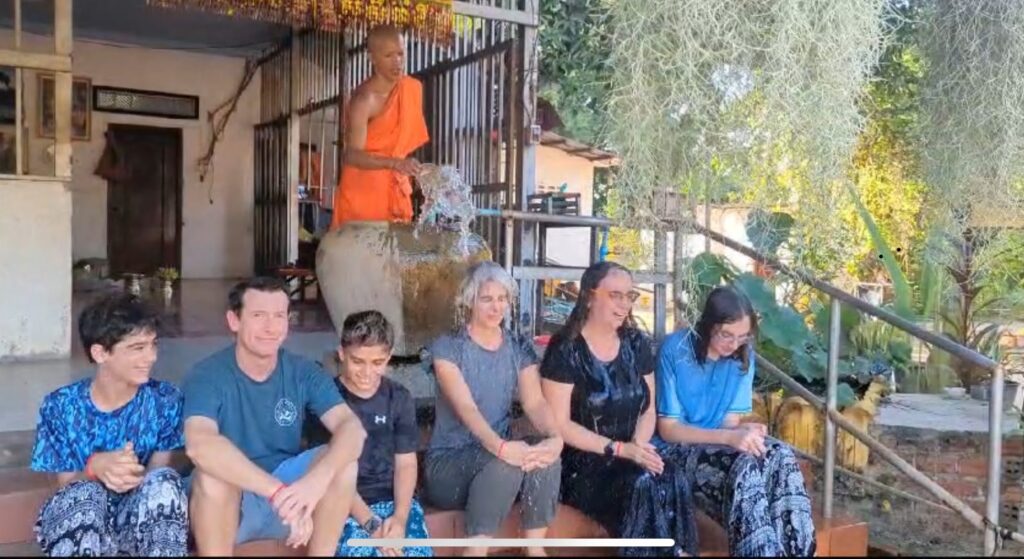
We ended the day watching the sunset in the countryside while drinking cold drinks and eating deep-fried sweet potatoes. Locals also stopped along the road to enjoy the sunset.


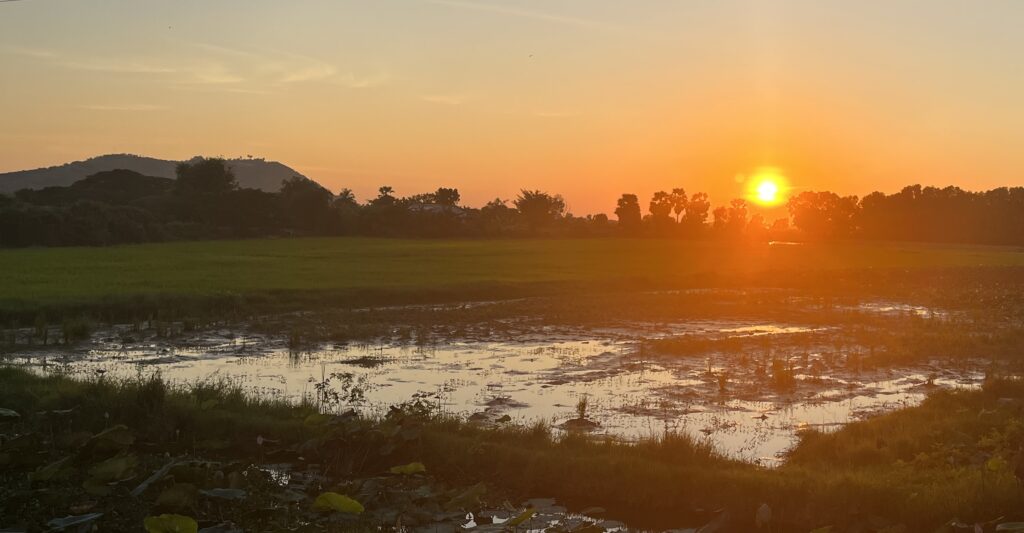
A visit to Siem Reap is not complete without going to Angkor Wat. The temple was originally constructed as a Hindu temple. During the 12th century, it was transformed into a Buddhist temple. There are many conservation and restoration projects at Angkor Wat. We woke up at 4 a.m. and arrived at Angor Wat before sunrise. Sok took us to the back of the main temple first, away from the crowds who were gathered to watch the sunrise. It was a perfect way to arrive at Angkor Wat. We toured the grounds of Angkor Wat for almost six hours.
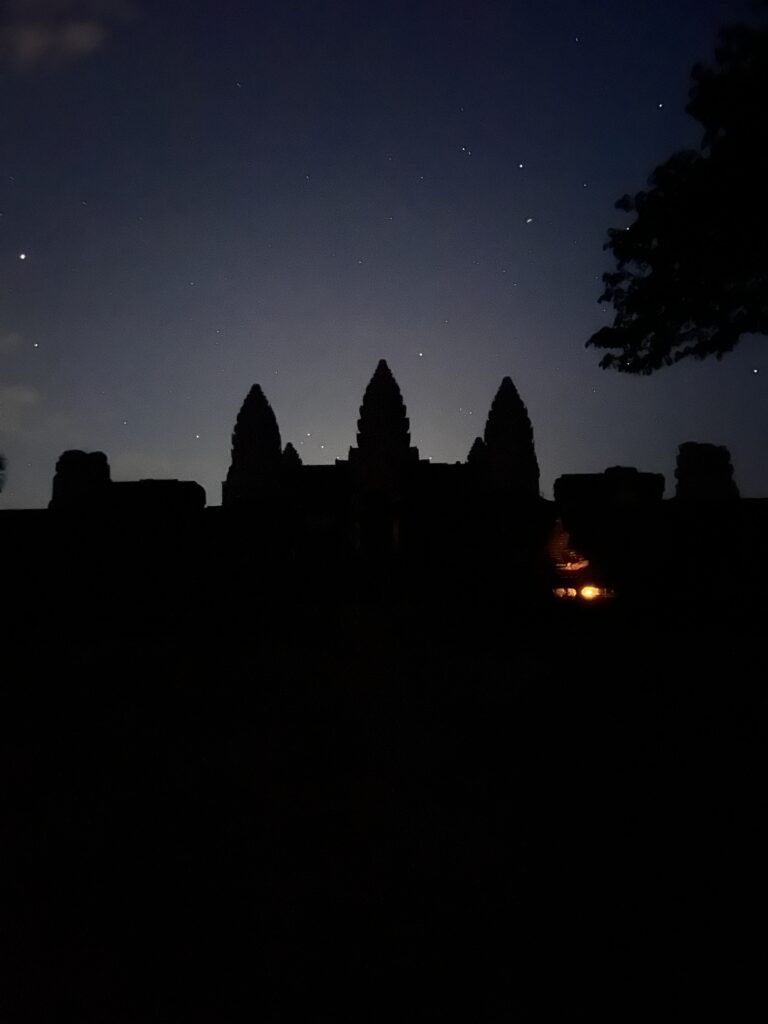
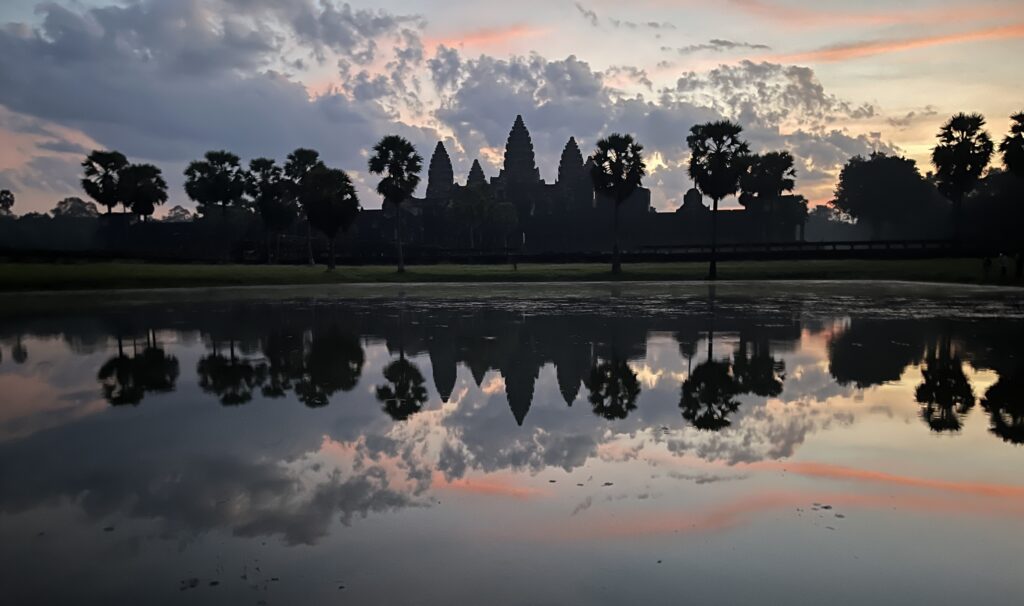
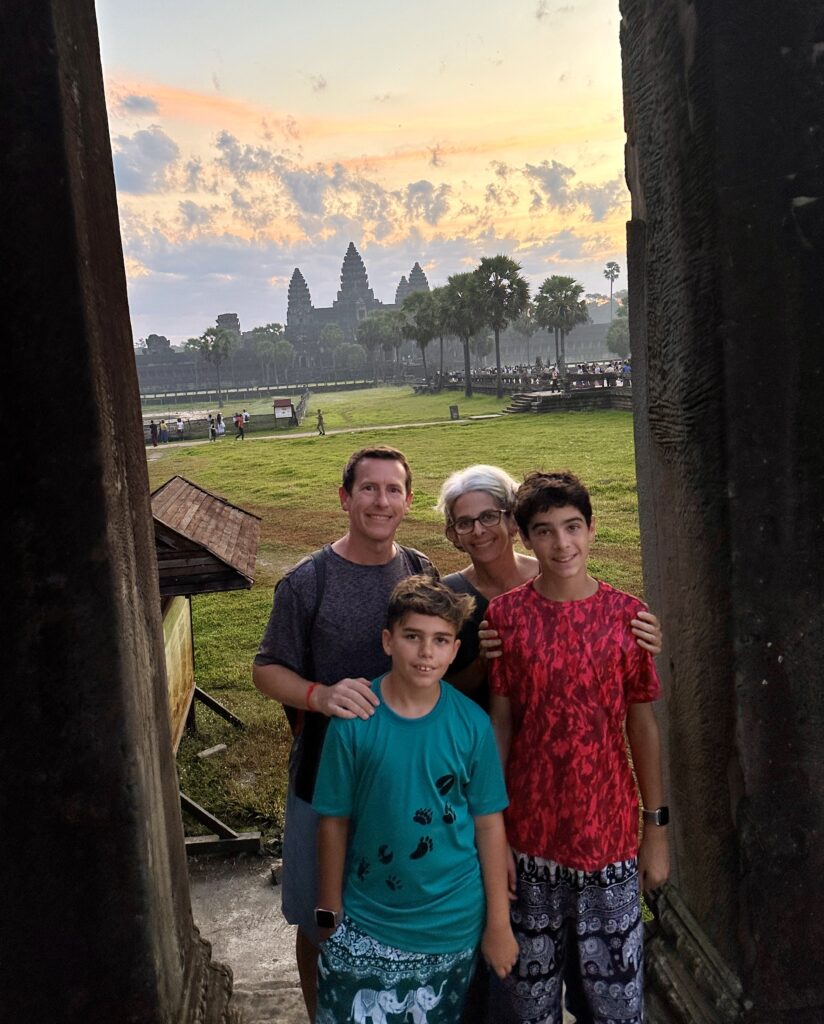
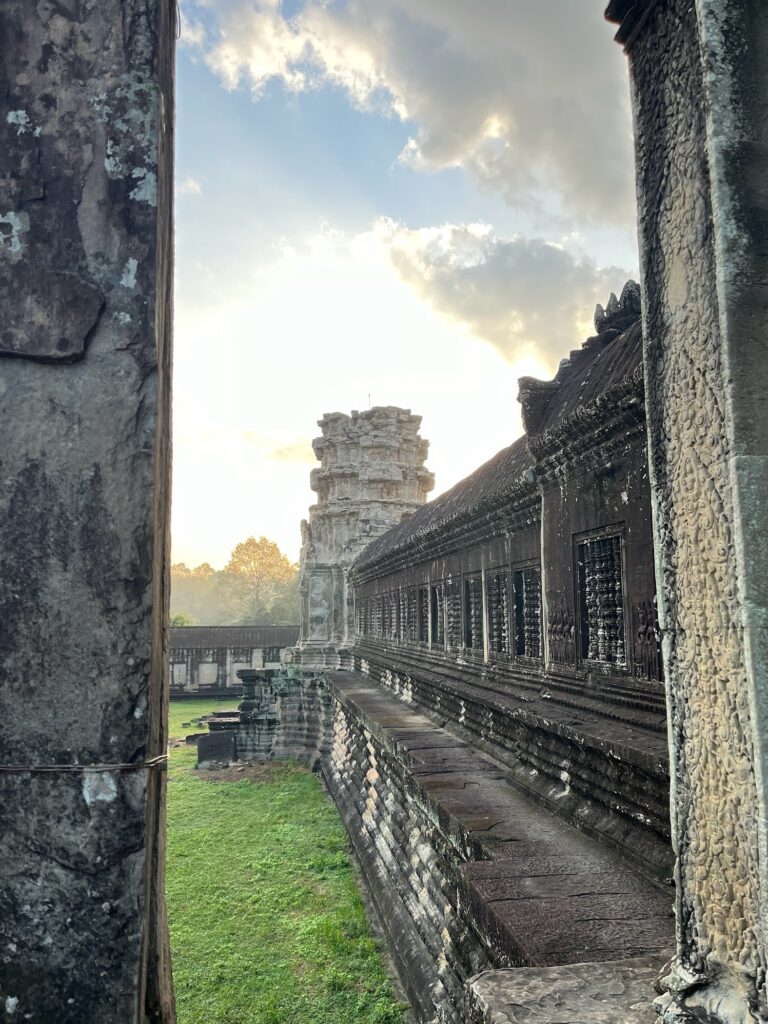
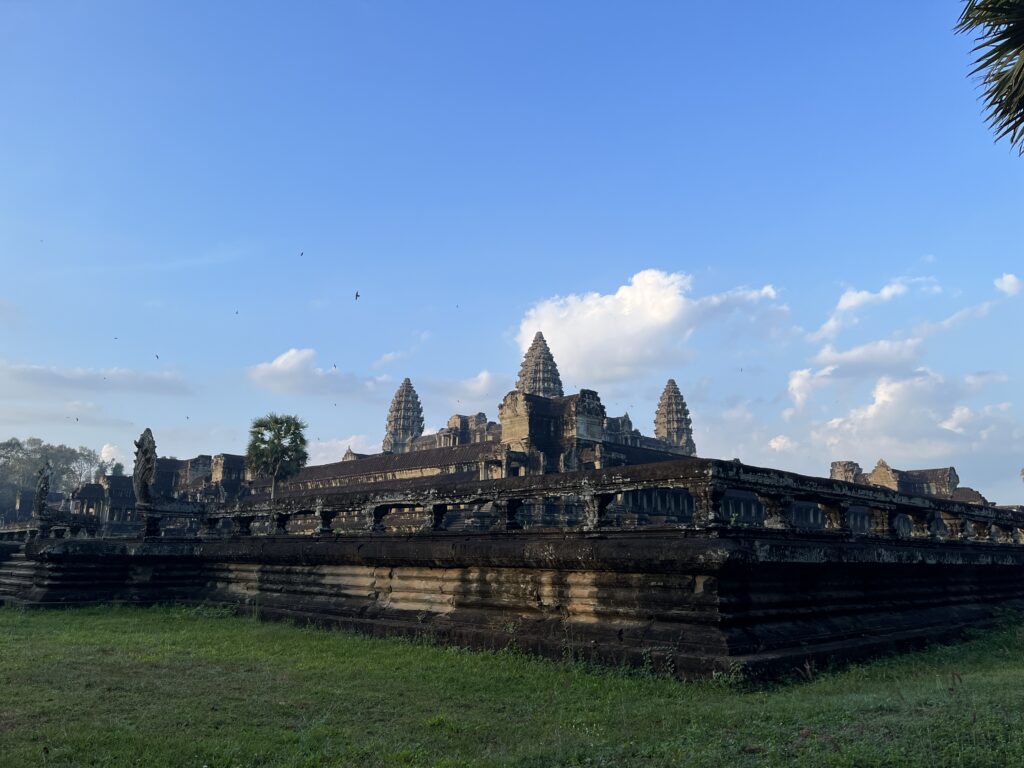
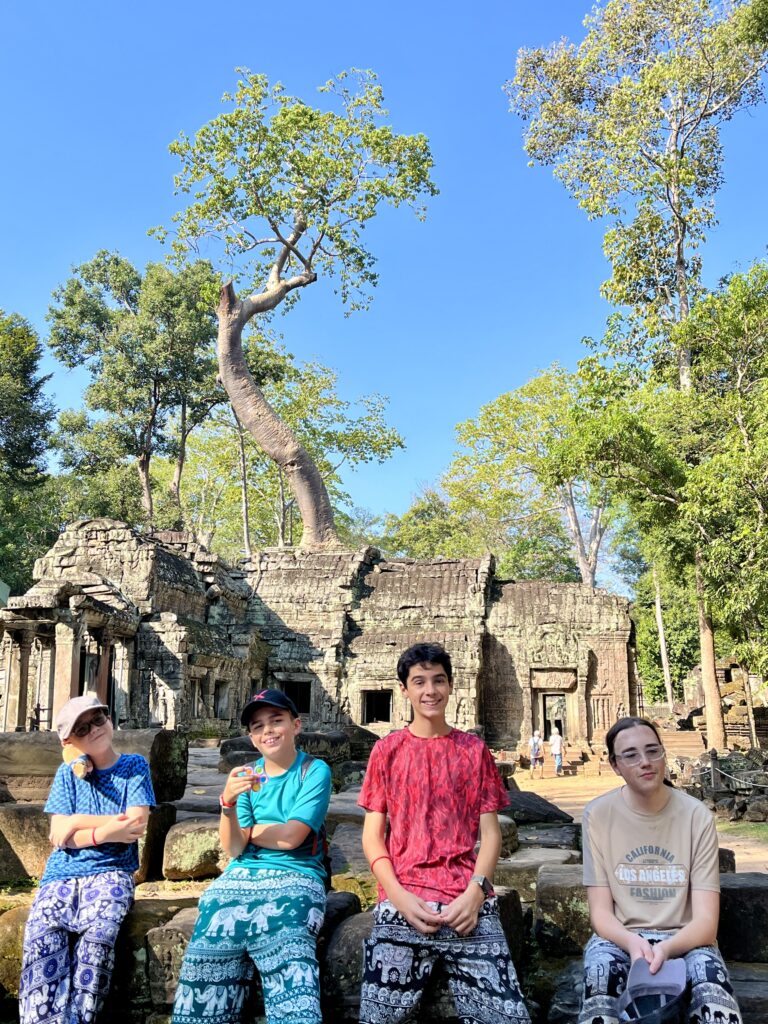
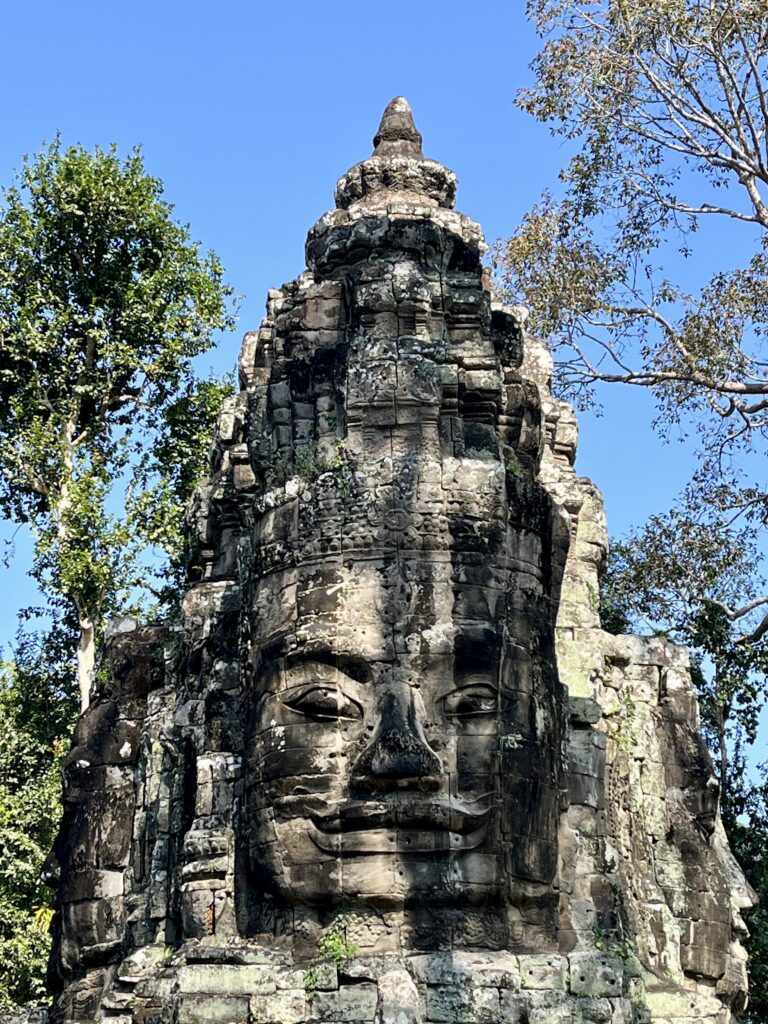



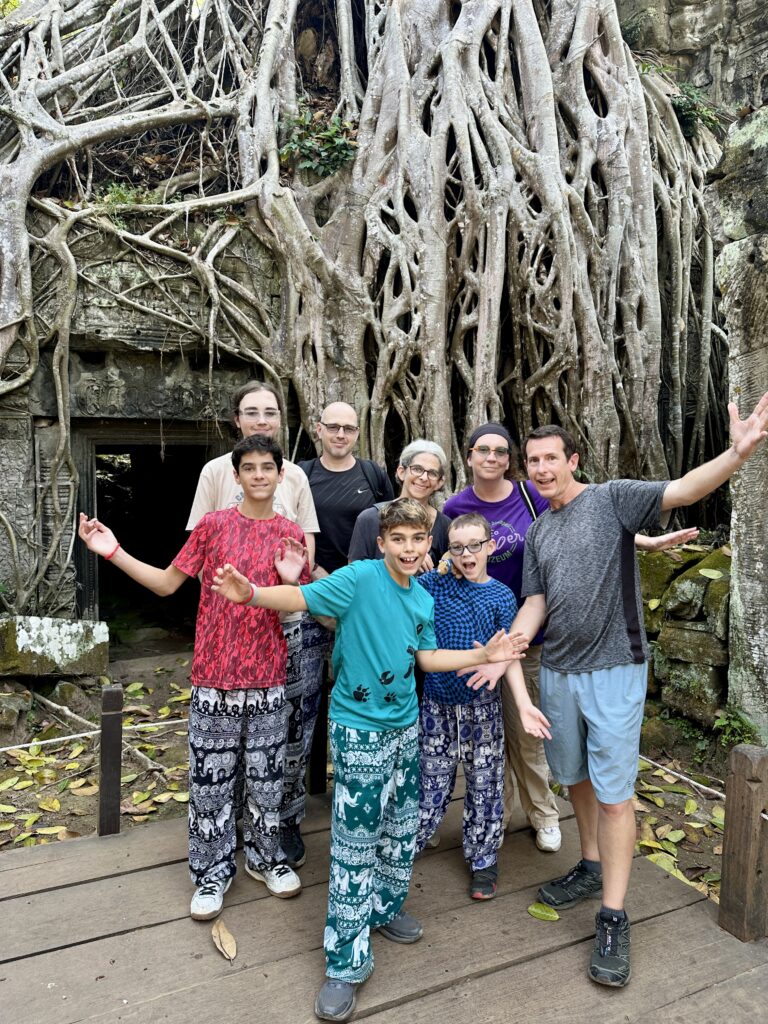
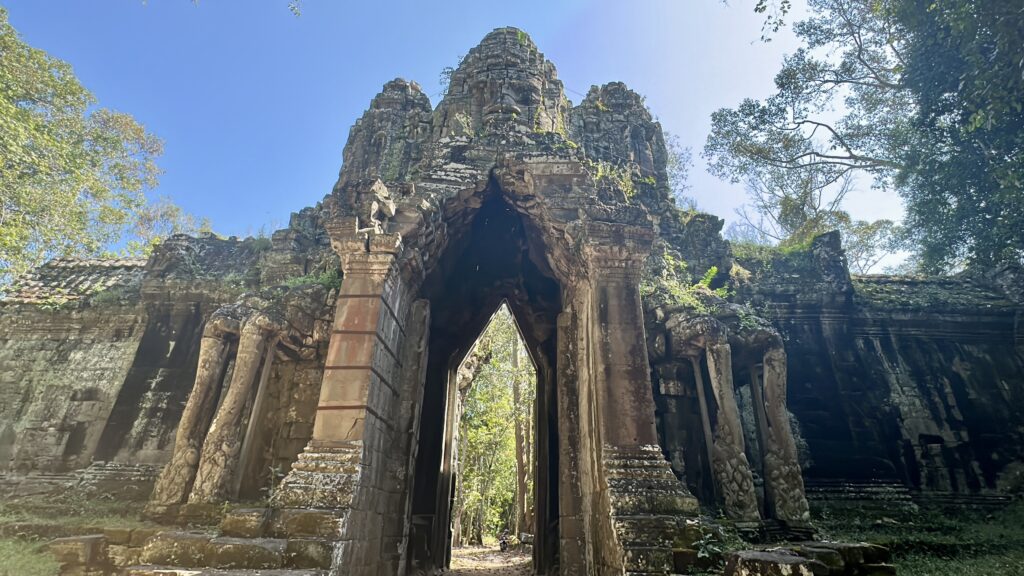
On our last day in Siem Reap, we spent the day at the pool with our friends. We also spent our last Riel on rolled ice cream and gelato! The Cambodian people are nice and welcoming. The food is delicious. The historical sites and landscapes are breathtaking. We will put Cambodia on our list of places to go back and visit.

